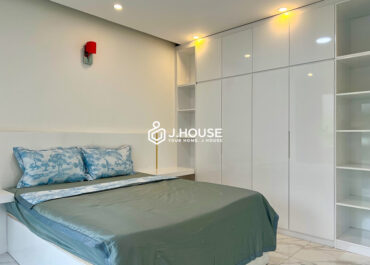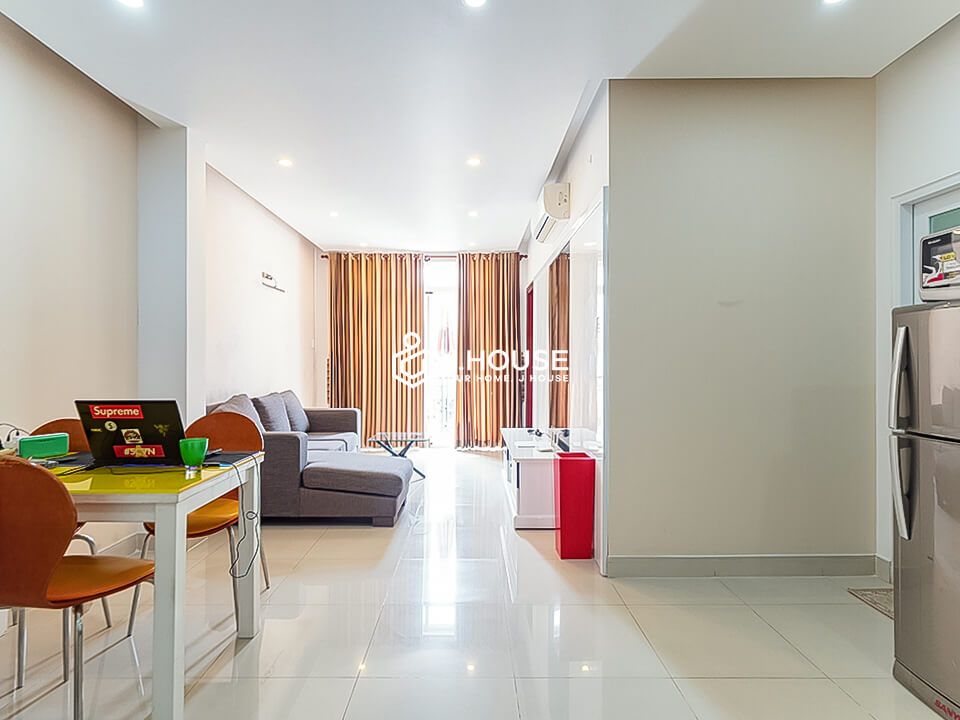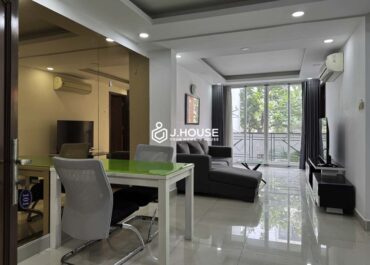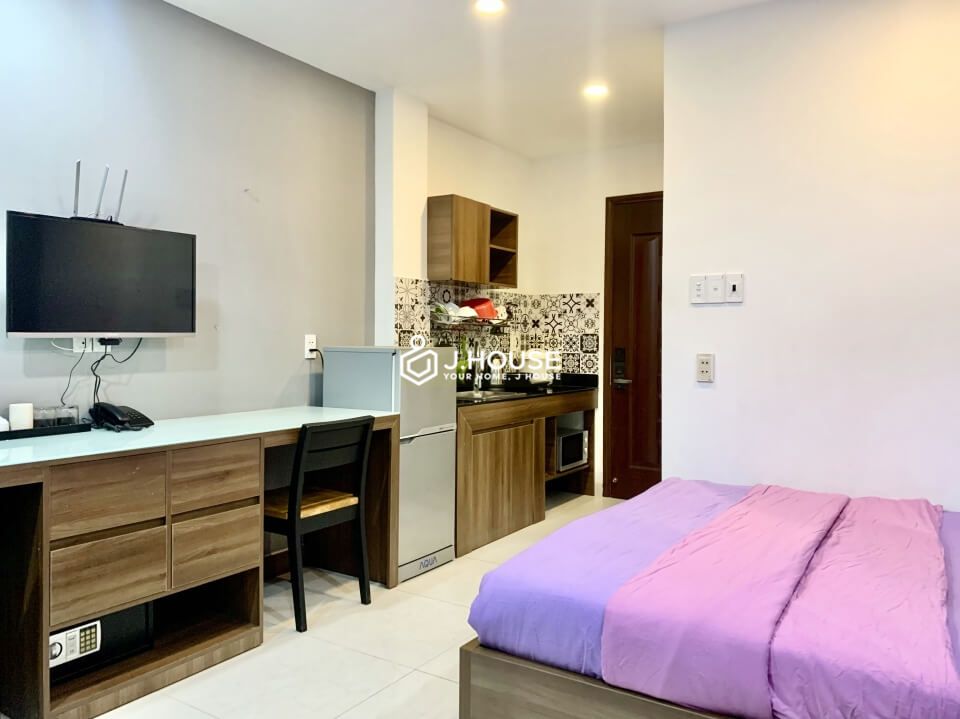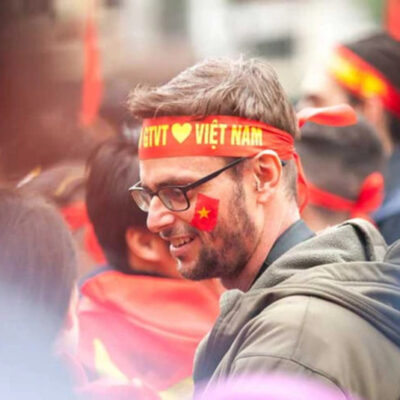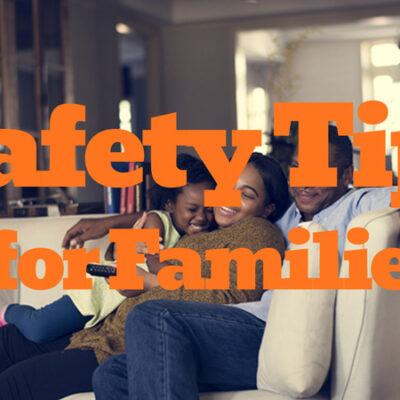Latest Posts
Latest Properties
Apartment Moving
Local Friendships That Changed Expats’ Lives in Vietnam
Local Friendships Shaping Expat Life in Vietnam
Local friendships often mark the moment when expat life in Vietnam stops feeling temporary and starts feeling real. Many newcomers arrive with visas approved, jobs secured, and housing arranged—yet still feel disconnected from the rhythms of daily Vietnamese life.

What truly changes that experience is rarely a better apartment or higher salary. It’s a human connection. A neighbor who notices when you’re missing. A colleague who quietly explains what isn’t written down. A local friend who helps you understand not just how things work, but why they matter.
This article explores how local friendships influence daily routines, shift mindsets, and shape long-term decisions—helping expats move beyond adjustment and toward a genuine sense of belonging in Vietnam.
From Arrival to Isolation: A Common Expat Experience
Vietnam is vibrant, social, and deeply community-driven—but for many newcomers, that energy can feel overwhelming rather than welcoming. In the early months, expats often lean on familiar circles: coworkers, international schools, or the wider expat community. These spaces offer comfort and shared understanding, but they can also create an invisible bubble.
Without meaningful local friends, daily life tends to remain transactional. Renting a home, visiting a clinic, or even greeting neighbors can feel surprisingly stressful. Cultural nuances stay unexplained, small frustrations accumulate, and loneliness quietly replaces the excitement of arrival.
This is one of the most common challenges of living in Vietnam long-term: being physically present, yet emotionally distant. And it’s precisely at this point that local connections begin to make all the difference.
Read more: The Most Common Culture Shocks for New Expats in Vietnam
Local Friendships: The Invisible Bridge to Belonging
Local friendships are not just social add-ons; they are the invisible bridge into the rhythm of Vietnamese life. A single genuine relationship can unlock insights that years of observation never will.
Through local friends, expats begin to understand unspoken social cues, navigate bureaucracy with greater confidence, and experience everyday Vietnam beyond familiar expat routes. More importantly, they start to feel recognized as individuals—not just foreigners passing through.

For many expats, this is the moment when Vietnam stops feeling temporary. Daily interactions gain meaning, routines feel lighter, and uncertainty softens. This is where expat integration in Vietnam truly begins—not through paperwork or time spent, but through human connection.
How Local Friends Change Daily Life in Vietnam
Local friendships reshape daily life in Vietnam in ways that go far beyond convenience. They influence how expats understand culture, navigate practical challenges, and move through the city with confidence.
1. Cultural Connection Beyond the Surface
Vietnamese culture is rich, layered, and often unspoken. Concepts such as saving face, indirect communication, or family-first values can be difficult to grasp through observation alone.
Through ongoing cultural exchange, local friends translate these ideas into a lived context—explaining not just what is happening, but why it matters. Over time, expats stop asking, “Why does this work this way?” and begin understanding, “Why this makes sense here.” That shift reduces frustration, builds empathy, and lays the foundation for long-term adaptation.
2. Practical Support That Builds Confidence
Many local relationships that change expat life begin with small, practical moments: help setting up utilities, advice on rental terms, or recommendations for trustworthy clinics. Local friends understand the informal systems behind daily life—how to negotiate fairly, when to ask questions, and what details to double-check.
This guidance turns uncertainty into clarity and allows expats to take ownership of their daily life in Vietnam instead of constantly second-guessing decisions.
3. A Sense of Safety and Stability
Knowing someone who has your back changes how you experience a city. Whether it’s a neighbor, coworker, or friend-of-a-friend, local connections form an informal safety net. For families, solo expats, and newcomers navigating expat experiences for the first time, this sense of support transforms Vietnam from a place you manage into a place where you feel grounded.
Read more: Why Expats Fall in Love with Vietnam
Making Local Friends in Vietnam: What Actually Works
Building local friendships in Vietnam doesn’t happen overnight—and it can’t be forced. Expats who succeed rarely follow a formula; instead, they develop a few intentional habits that create space for genuine connection.

1. Show Up Consistently
Consistency matters more than charisma. Showing up at the same café, gym, or neighborhood shop builds familiarity over time. Brief greetings slowly turn into conversations, and conversations become trust. Friendship grows not through big gestures, but through presence.
2. Join Purpose-Driven Communities
Purpose-driven communities also play a key role. Language exchanges, volunteer groups, sports clubs, or creative workshops create natural environments for social integration. Shared activities remove pressure and place everyone on equal footing, allowing relationships to form organically.
3. Learn (Some of) the Language
Language, even at a basic level, signals respect. A few Vietnamese phrases can soften interactions, invite patience, and open doors that fluent English never will. Effort often matters more than accuracy.
4. Shift from Convenience to Curiosity
Finally, expats who form meaningful local friendships shift from convenience to curiosity. Instead of staying within expat-only spaces, they ask questions, listen more than they speak, and accept differences without rushing to judge them.
These small, consistent choices are at the heart of building local friendships as an expat—not perfectly, but genuinely, and often more deeply than expected.
Stories That Change Everything
Many long-term expats can trace a defining shift in their journey back to a single relationship. It might be a Vietnamese colleague who slowly became a trusted mentor, a neighbor who showed up during a medical emergency, or a local family who welcomed an expat into cherished holiday traditions.
Moments like these quietly redefine what “home” means. They turn making local friends in Vietnam from a pleasant idea into a life-changing reality. Through these connections, expats gain far more than companionship—they gain perspective, resilience, and the steady reassurance of belonging in a place that once felt unfamiliar.
Read more: Funny & Unexpected Moments When Living in HCMC
Local Friendships and Long-Term Decisions
When expats begin to feel genuinely connected, their long-term decisions naturally start to shift. Short-term contracts turn into longer commitments. Temporary rentals evolve into real home searches. Vietnam slowly changes from “where I work” to “where I live.”

Local friendships play a quiet but powerful role in this transition. They influence how expats think about career growth, raising families, investing in property, and even whether to stay through inevitable challenges or move on. When people feel supported and understood, uncertainty becomes easier to manage and long-term planning feels less risky.
Belonging reshapes priorities. It creates emotional roots that anchor people before any practical decision is made. For many expats, it’s not paperwork or opportunity that keeps them in Vietnam—it’s the relationships that make staying feel meaningful.
Read more: Finding “Home” Far Away: Real Stories from Tenants
When Connection Feels Hard: A Realistic Perspective
Not every effort turns into friendship, and cultural gaps don’t disappear overnight. Misunderstandings happen. Schedules don’t align. Daily life gets busy—on both sides.
But local friendships aren’t built on perfection. They grow through effort, patience, and a willingness to stay open even when things feel awkward or slow. Sometimes, a few genuine connections—however limited—are enough to ease loneliness and soften the sharp edges of cultural shock.
For expats struggling with isolation, this is an important reminder: integration is not a personality trait or a social skill you either have or don’t. It’s a process that unfolds over time, shaped by small, consistent moments of connection. And those moments, quietly and steadily, make life in Vietnam feel more human—and more livable.
Read more: Lessons Learned from First-Time Renters in Vietnam
Finding Support While You Build Connections
While meaningful friendships grow over time, reliable professional support helps expats feel grounded along the way. Clear housing solutions, legal guidance, and trusted local insight reduce daily friction—freeing mental space for connection to happen naturally.
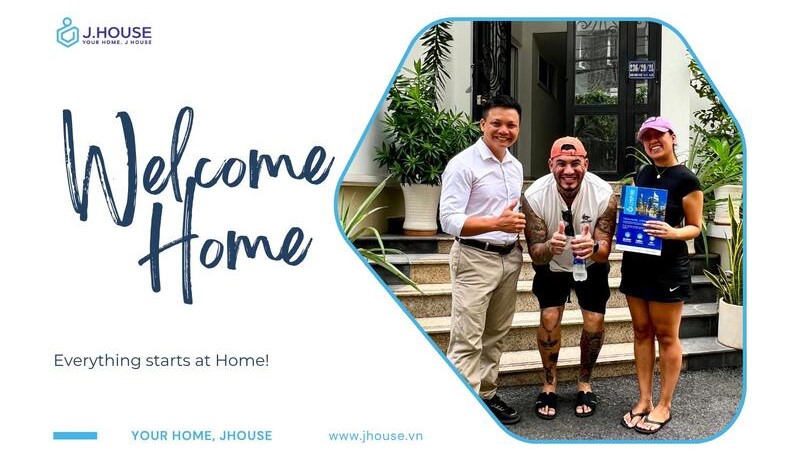
At JHouse, we work with expats who are building lives, not just securing apartments. By simplifying housing decisions and sharing local understanding, we help create the stability that allows deeper relationships—and a genuine sense of belonging in Vietnam—to take root.
Read more: JHouse – Where Great Homes Meet Great People
Final thought: From Living to Belonging
Local friendships are often the quiet force behind the most meaningful expat journeys. They turn expat life in Vietnam from a checklist of logistics into a shared human experience—shaped by trust, patience, and cultural understanding.
Over time, these relationships influence more than daily routines. They shape identity, soften cultural distance, and guide long-term choices about work, family, and where “home” truly is. Vietnam rarely feels easy—but through local friendships, it becomes familiar, navigable, and deeply personal.
Belonging doesn’t come from mastering systems alone; it grows when the foundations of daily life feel stable enough to open outward. At JHouse, we support expats at that starting point—creating housing stability and local clarity so meaningful connections can grow naturally. For those seeking more than convenience, local friendships are where living slowly becomes belonging.
JHouse Content Team
The in-depth content development team on housing services for foreigners & Vietnamese in Vietnam. The content is simple, easy to understand, and logically arranged to bring readers useful topics and information from real experiences.
Expat Couples in Vietnam: Love, Work & Life Together
Thriving as Expat Couples in Vietnam: Love, Work & Life Together
Expat couples in Vietnam are finding that life here is far more than a temporary stop—it’s an opportunity to build a shared future. From bustling cities to tranquil coastal towns, couples face the exciting challenge of balancing love, careers, and daily life while navigating cultural differences, local customs, and personal growth.

Whether relocating for work, adventure, or family, knowing how to tackle common obstacles—like finding the right home, managing work-life balance, and connecting with a community—is essential to truly thriving.
With thoughtful planning, open communication, and a willingness to embrace new experiences, expat couples in Vietnam can turn challenges into opportunities and create a deeply fulfilling life together.
Expat Couples in Vietnam: Building a Life Together
Living as expat couples in Vietnam is more than finding housing or securing jobs—it’s about intentionally shaping a shared life that fits both partners. Couples often face challenges such as adapting to local culture, managing careers, balancing daily routines, and creating a home that truly feels theirs.
With thoughtful planning, open communication, and supportive community networks, these challenges can transform into opportunities for personal growth, stronger bonds, and deeper connections.
Choosing the Right City for Couples
Vietnam offers a variety of living experiences, and selecting a city that aligns with your lifestyle is crucial. Consider these options:
- Ho Chi Minh City: Perfect for ambitious professionals and families seeking career growth, international schools, and a lively social life. Expect traffic and higher living costs.
- Hanoi: Ideal for educators, diplomats, and culture enthusiasts. Enjoy heritage streets, lake walks, and rich culture, but a slower pace and bureaucratic hurdles exist.
- Da Nang: Attractive to remote workers and retirees who prefer beachside living, fresh air, and flexibility, though expat networks are smaller.
- Hoi An & Da Lat: Suited for creatives and slow-living couples. Peaceful, artistic, and affordable, but with limited healthcare and job options.
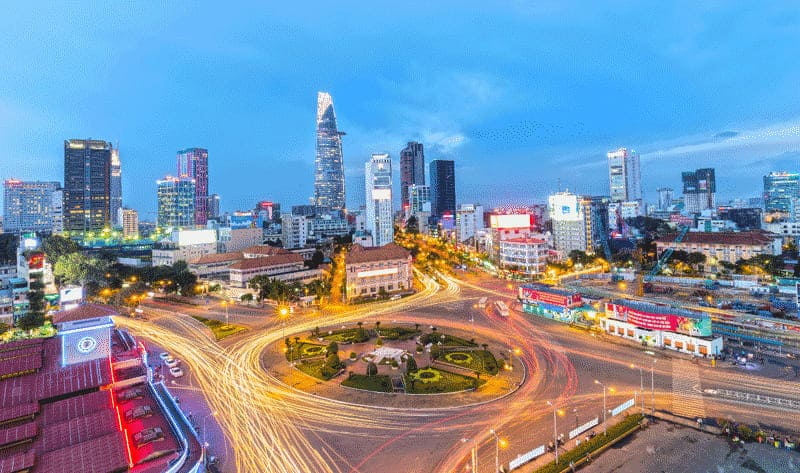
Think of the first few months as a trial period: rent short-term, explore neighborhoods, and understand local rhythms before committing. This approach ensures your home supports both your professional ambitions and personal well-being, setting the foundation for a fulfilling life together.
Finding Housing That Fits Both Partners
For expat couples in Vietnam, finding a home that suits both partners can be challenging—but it sets the tone for daily life and emotional well-being. Popular housing options include:
- Serviced apartments: Move-in ready, ideal for easing into life in Vietnam.
- Condos: Modern, secure, perfect for couples or small families.
- Shared housing: Budget-friendly, community-oriented, ideal for short-term stays or solo work trips.
- Villas: Private and spacious, perfect for couples seeking comfort and outdoor space.
Working with trusted agencies like JHouse helps avoid hidden fees, unclear contracts, and stress. Choosing the right home ensures a smoother, more enjoyable life together and supports long-term happiness.
Read more: Lessons Learned from First-Time Renters in Vietnam
Work-Life Balance for Expat Couples
Balancing career ambitions with personal life is a constant challenge for couples building life together in Vietnam. Many navigate international jobs, side projects, and shared household responsibilities while adjusting to a new environment.
Effective strategies include:
- Aligning career goals with local work culture
- Planning routines that allow quality couple time
- Carving out personal downtime

Utilizing coworking spaces and tapping into expat networks can help separate work from home life, reduce stress, and create a balanced rhythm that supports both professional growth and relationship well-being.
Navigating Cultural Differences
Adjusting to life together in Vietnam means embracing cultural differences as part of the daily journey. Common challenges include:
- Language barriers at work and in daily routines
- Differences in local customs and etiquette
- Adapting family habits to the Vietnamese lifestyle
Embracing cultural humility, staying curious, and actively participating in community activities turn potential frustrations into growth opportunities. Using apps like Meetup, InterNations, and joining hobby or volunteer groups helps couples build meaningful connections, strengthen relationships, and truly feel integrated into local life.
Read more: The Most Common Culture Shocks for New Expats in Vietnam
Budgeting for Two: Smart Financial Planning
For expat couples in Vietnam, managing finances is key to enjoying a stress-free and fulfilling life. While Vietnam is generally affordable, intentional spending ensures comfort, flexibility, and opportunities to explore. Typical monthly expenses for two adults include:
| Expense | Estimated Monthly Cost (USD) | Notes |
| Rent (1BR/2BR apartment) | $400–$1,200 | Varies by city & district |
| Utilities & Internet | $50–$120 | Depends on lifestyle |
| Food & Dining | $300–$600 | Includes occasional dining out |
| Transportation | $50–$100 | Motorbikes, Grab, or public transport |
| Healthcare Insurance | $100–$300 | Local or international plans |
Setting a realistic budget helps couples avoid surprises, plan for adventures, and invest in experiences that strengthen their relationship, turning daily living into a smoother, more enjoyable journey together.
Healthcare: Peace of Mind for Couples
Prioritizing reliable healthcare and comprehensive health insurance is crucial for couples building a life together in Vietnam.

Private hospitals and clinics, including FV Hospital (HCMC), Family Medical Practice, and Raffles Medical, offer bilingual services and international standards of care. Selecting the right health plan ensures both partners are covered for emergencies, chronic conditions, and preventive care.
Thoughtful healthcare planning provides peace of mind, allowing couples to focus on careers, family life, and fully enjoy their experience in Vietnam with confidence and security.
Raising a Family as an Expat Couple
Couples raising children abroad in Vietnam can find a supportive and enriching environment. The country offers:
- Top international schools like ISHCMC, BIS, and UNIS Hanoi
- Family-friendly neighborhoods such as Thao Dien, Tay Ho, and An Thuong (Da Nang)
- Weekend escapes to beaches, mountains, and national parks
Living and parenting as an expat couple in Vietnam allows children to grow as adaptable, global-minded, and culturally fluent third-culture kids. Thoughtful planning ensures both parents and children thrive in this dynamic and welcoming environment.
Building Community and Connection
Strong social connections are essential for couples building a life together in Vietnam.

Many discover community through:
- Facebook groups like Foreigners in Saigon, Hanoi Massive Community, and Expats in Da Nang
- o-working spaces such as The Hive, Toong, and CirCO
- hobby and volunteer groups focused on yoga, hiking, reading, or charity work
Cultivating these connections reduces isolation, offers practical support, and makes daily life more meaningful. Engaging with local and expat networks helps couples feel integrated, enriches their shared experiences, and strengthens their bond while living abroad.
Read more: Finding Your Tribe: Join Expat Communities in Ho Chi Minh City
Overcoming Common Challenges
Building a life together in Vietnam comes with inevitable challenges. Couples often face visa renewals, bureaucratic hurdles, language gaps, and cultural misunderstandings, alongside navigating work and housing logistics.
The key to thriving lies in flexibility, resourcefulness, and seeking support. Leveraging local networks, expat communities, and professional advisors helps partners transform obstacles into growth opportunities.
With the right mindset, challenges become lessons that strengthen relationships, deepen cultural understanding, and create a more confident, fulfilling life while living abroad in Vietnam.
Read more: The Most Common Culture Shocks for New Expats in Vietnam
Thinking About Long-Term Roots
As couples consider settling down in Vietnam, the question of buying property versus continuing to rent often arises. Homeownership can be a meaningful declaration of belonging, but it requires careful planning:
- Understanding foreign ownership laws
- Knowing investment limits and policies
- Performing due diligence to ensure long-term security
Even while renting, consciously shaping your living environment helps create a sense of stability and home. Thoughtful choices today lay the foundation for a lasting, fulfilling life together in Vietnam.
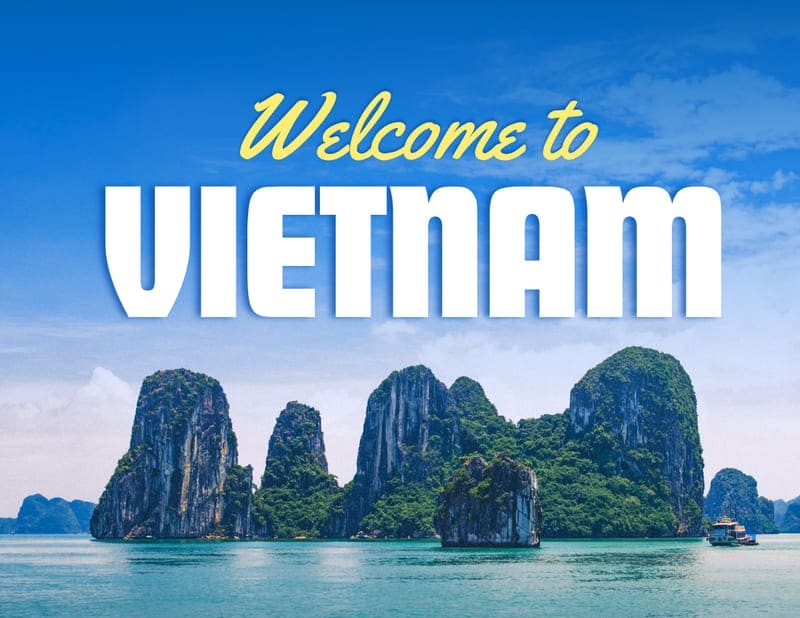
Final Thoughts: Life as Expat Couples in Vietnam
For expat couples in Vietnam, building a life together is a journey of discovery, adaptation, and growth. Navigating love, careers, and daily routines while embracing cultural differences and forming supportive networks is both challenging and rewarding.
From finding the right home and managing finances to raising a family and cultivating meaningful connections, Vietnam offers countless opportunities to thrive rather than merely get by. At JHouse, we guide couples through the practicalities and uncertainties of relocation, helping you find not just a house, but a home where your shared life can flourish.
Let Vietnam become more than a destination—let it be the canvas for your adventures, growth, and the story you create together.
JHouse Content Team
The in-depth content development team on housing services for foreigners & Vietnamese in Vietnam. The content is simple, easy to understand, and logically arranged to bring readers useful topics and information from real experiences.
The Most Common Culture Shocks for New Expats in Vietnam
Culture Shock in Vietnam: What New Expats Should Expect
Moving abroad is exciting—but culture shocks rarely arrive all at once. Instead, they surface quietly in everyday moments: a conversation that feels indirect, a routine that suddenly shifts, or a simple task that takes more effort than expected. For many newcomers, culture shocks in Vietnam aren’t about dramatic differences—they’re about the accumulation of small surprises that make “normal” feel unfamiliar.

Vietnam welcomes new expats with warmth, energy, and opportunity. Yet adjusting to life here requires more than handling visas or finding housing. It calls for awareness, patience, and a willingness to see daily life through a new lens. This guide explores the most common culture shocks new expats face in Vietnam—not to overwhelm you, but to help you recognize them early, adapt with confidence, and move from confusion toward genuine belonging.
A Shift That Every New Expat Faces
Culture shock isn’t a failure to adapt—it’s evidence that adaptation is already happening. When you move to Vietnam, everyday routines reset almost overnight. Familiar social cues fade, unspoken rules shift, and systems operate on different logic. Tasks that once felt automatic now demand attention, patience, and constant adjustment.
For new expats in Vietnam, culture shock rarely arrives as a single moment. It unfolds in stages—initial excitement, subtle frustration, and eventually, growing clarity. The discomfort in between is not a warning sign; it’s part of the integration process itself.
Living in Vietnam as an expat means learning how daily life works beneath the surface. And that learning begins by recognizing the most common culture shocks—not as obstacles to avoid, but as signals that you’re moving closer to understanding, and ultimately, belonging.
Read more: Funny & Unexpected Moments When Living in HCMC
Culture Shocks New Expats Commonly Experience in Vietnam
1. Communication Is Indirect—and Context Matters
One of the earliest culture shocks new expats experience in Vietnam is the communication style. In many Western cultures, directness signals honesty and efficiency. In Vietnam, however, harmony and mutual respect often matter more than blunt clarity.
You may hear “yes” even when an answer is uncertain, or receive responses that feel vague rather than definitive. This isn’t avoidance or inconsistency—it’s a form of cultural courtesy designed to preserve relationships and avoid discomfort. For expats new to Vietnam, learning to read tone, timing, and non-verbal cues quickly becomes part of daily life.

How to adapt:
Ask open-ended questions, listen between the lines, and observe patterns over time. In Vietnam, understanding rarely comes from confrontation—it grows through familiarity, trust, and ongoing relationships.
2. Time Feels Flexible
Vietnam moves to a different rhythm. Meetings may start later than planned. Deadlines shift. Arrangements change with little notice. For many new expats, this fluid sense of time quickly becomes a daily culture shock.
Rather than strict schedules, Vietnamese daily life prioritizes responsiveness and human presence. What matters most is not punctuality, but being available when it counts.
How to adapt:
Build buffer time into your plans and follow up with patience rather than pressure. As you stop measuring time too rigidly, daily life in Vietnam begins to feel less frustrating—and far more manageable.
3. Personal Space Works Differently
Crowded sidewalks, close conversations, and constant movement are part of everyday life in Vietnam. For many newcomers, the reduced sense of physical space can feel overwhelming or mentally draining at first.
This culture shock isn’t about intrusion—it reflects a communal culture where shared space is normal and expected. In busy cafés, markets, and neighborhoods, proximity signals coexistence rather than disrespect.
How to adapt:
Balance stimulation by choosing environments that match your comfort level. Quieter cafés, calmer districts, and regular time in green spaces help you recharge while adjusting gradually to the rhythm of daily life.
4. Noise Is Part of the Landscape
Motorbikes, street vendors, construction, karaoke—sound is woven into daily life in Vietnam. For many expats, constant noise becomes one of the most persistent culture shocks when living here. Silence is rare, especially in large cities. Yet noise in Vietnam often signals activity, livelihood, and connection rather than disorder.
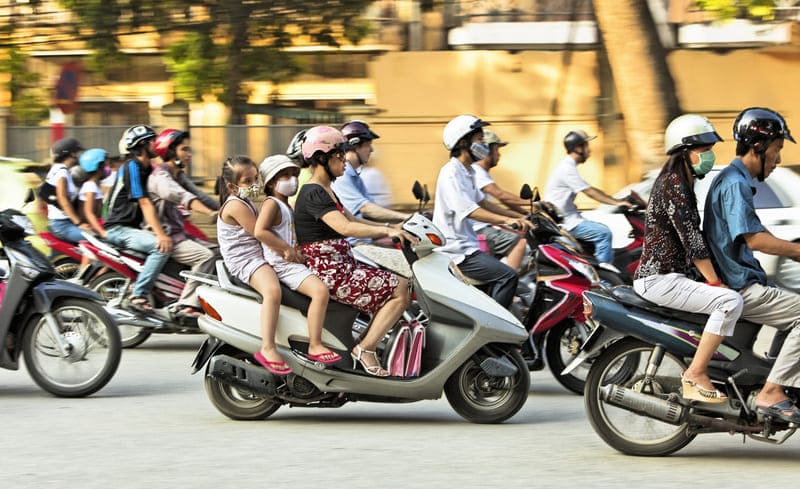
How to adapt:
Thoughtful housing choices, basic soundproofing, and noise-canceling tools can dramatically improve comfort. With time, what once felt overwhelming often blends into the background—and becomes part of the city’s living rhythm.
5. Hierarchy Shapes Social Interaction
Respect for age, status, and authority runs deeply through Vietnamese culture. New expats are often surprised by formal speech patterns, indirect decision-making, and visible deference to seniority—especially in workplaces, housing discussions, and family settings.
How to adapt:
Observe before asserting. Address people with respect and patience. Understanding hierarchy doesn’t limit communication—it often opens doors, smooths relationships, and helps you avoid misunderstandings before they happen.
6. Bureaucracy Requires Patience
From visas to banking, bureaucracy in Vietnam can feel unpredictable at first. Requirements may shift, procedures vary by location, and timelines often stretch longer than expected. For new expats, this becomes a major adjustment challenge—not because systems don’t work, but because they operate on different logic.
How to adapt:
Seek local guidance, double-check information, and allow extra time for every process. Flexibility and patience aren’t optional here—they’re part of the system. Seasoned expats learn that persistence, not pressure, is what ultimately gets things done.
7. Service Culture Is Relationship-Based
Customer service in Vietnam often prioritizes relationships over standardized systems. New expats may feel confused when service feels exceptional one day and distant the next—especially if they’re used to predictable processes. This inconsistency is a common culture shock, not a lack of professionalism.
How to adapt:
Build rapport and return to the same places regularly. Polite familiarity, patience, and trust often lead to smoother interactions than formal complaints or rigid expectations ever could.
8. Community Comes Before Individual Convenience
Vietnamese culture places strong emphasis on collective well-being. Family, neighbors, and social circles often influence decisions—from housing to career choices. For new expats, this can feel restrictive at first, especially if independence is a core value.
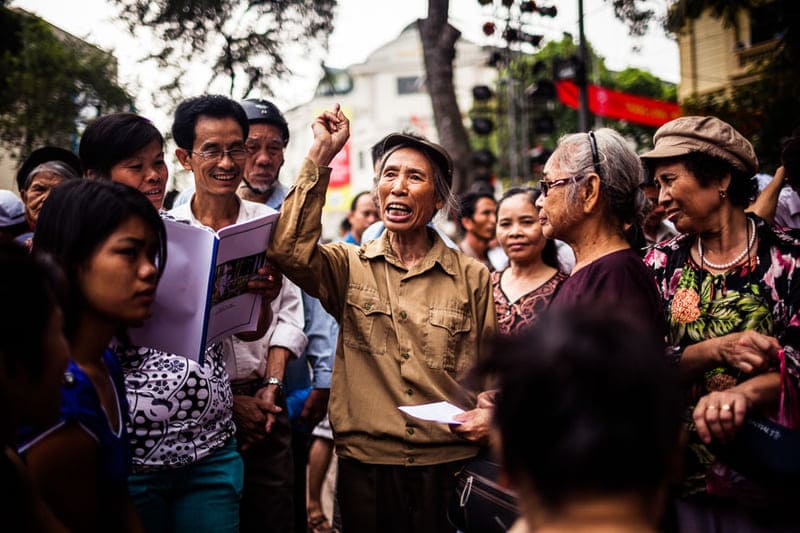
How to adapt:
Reframe community as support rather than limitation. Over time, strong social networks make daily life easier, safer, and far more meaningful than navigating everything alone.
Turning Culture Shock into Cultural Understanding
The most common culture shocks for new expats in Vietnam aren’t obstacles—they’re entry points into deeper understanding. Each moment of confusion invites learning, and each misunderstanding gradually builds cultural fluency. These experiences shape how expats learn to navigate daily life beyond surface-level differences.
Adapting to life in Vietnam doesn’t require abandoning your identity—it asks you to expand it. With time, what once felt foreign becomes familiar. What felt frustrating turns functional. And what seemed temporary begins to feel grounded and real.
At JHouse, we witness this transformation every day. Expats arrive uncertain, work through culture shocks, and gradually find rhythm, connection, and confidence in Vietnam—turning adjustment into genuine belonging.
Read more: Why Expats Fall in Love with Vietnam
Practical Tips for Adapting Faster
Adapting to a new culture doesn’t happen overnight. But small, intentional choices in daily life can make culture shocks in Vietnam feel more manageable—and far less overwhelming over time. These practical habits help new expats move through uncertainty with greater ease and confidence:
- Observe first, before reacting to unfamiliar situations
- Ask locals and experienced expats for context, not just answers
- Choose housing that supports your lifestyle and energy level
- Learn a few basic Vietnamese phrases to ease daily interactions
- Accept discomfort as a natural part of personal growth
Understanding culture shocks in Vietnam helps you move beyond survival mode. With the right mindset and support, adaptation becomes clarity—and daily life begins to feel less like adjustment, and more like belonging.

Read more: Lessons Learned from First-Time Renters in Vietnam
Final Thoughts: From Culture Shock to Cultural Confidence
Culture shocks are not signs that Vietnam isn’t right for you. There are signs that you’re stepping outside familiarity and into growth. For new expats, the journey through culture shock is often the gateway to deeper connection, resilience, and understanding.
Living in Vietnam as an expat becomes easier when you stop resisting difference—and start learning from it. With the right mindset, local insight, and support system, confusion transforms into clarity.
At JHouse, we help expats find housing that supports a smoother transition into life in Vietnam. Because the right home makes daily adjustments easier—and feeling at home begins with the space you live in.
JHouse Content Team
The in-depth content development team on housing services for foreigners & Vietnamese in Vietnam. The content is simple, easy to understand, and logically arranged to bring readers useful topics and information from real experiences.
Funny & Unexpected Moments When Living in HCMC
Expat Life in HCMC: Funny & Unexpected Daily Moments
Living in HCMC often starts with excitement — new food, unfamiliar streets, and a rhythm that feels both chaotic and alive. But somewhere between your first motorbike ride and your first confidently mispronounced Vietnamese phrase, something unexpected happens: you realize how funny daily life here can be.

Ho Chi Minh City doesn’t ease you in gently. It pulls you into motion — noise, warmth, confusion, spontaneous smiles, and moments so absurd they quickly become stories you’ll tell again and again. For many expats, daily life in HCMC brings surprises that test patience, challenge assumptions, and leave you laughing at yourself in public.
These moments aren’t just amusing details. They’re how strangers slowly become residents — and how living in HCMC begins to feel like home.
A City That Constantly Keeps You Guessing
If there’s one thing you learn quickly about living in Ho Chi Minh City, it’s that predictability is overrated. A five-minute errand can turn into a 45-minute street-side coffee conversation. A quiet evening plan might end with a wedding party unfolding right outside your apartment door.
This is often where expats experience their first real culture shock living in HCMC. Schedules stretch. Rules bend. “Tomorrow” might mean tomorrow — or sometime next week. At first, these daily surprises in Saigon can feel disorienting, even frustrating.
But over time, something shifts. You realize life here doesn’t move by rigid timelines. It moves through relationships, shared moments, and human connection — and once you accept that, the city starts to make sense.
When Language Barriers Turn Into Punchlines
Even with basic Vietnamese, misunderstandings are inevitable — and often hilarious — when living in HCMC. You confidently order what you think is a simple iced coffee, only to receive something neon-colored and completely unexpected. You try to thank someone politely and accidentally use a word meant for close friends.

The reaction is almost always the same: laughter, patience, and help. For many expats, these funny moments living in HCMC quickly become icebreakers rather than obstacles. Locals value effort more than accuracy, and every small mistake becomes part of your expat experience in HCMC.
Over time, you learn that communication here goes far beyond vocabulary. It’s not about saying everything right — it’s about showing up with humility, openness, and a sense of humor.
The Unspoken Rules of Saigon Street Life
Saigon street life is a living organism — constantly breathing, moving, and adapting in ways no guidebook can fully explain. When living in HCMC, crossing the street for the first time often becomes a defining moment. Traffic doesn’t stop; it flows around you. Hesitation feels dangerous, while steady confidence somehow works.
Sidewalks transform into cafes, repair shops, and open-air living rooms. Plastic stools appear out of nowhere. A simple meal turns into a shared experience with people you’ve never met before. These unexpected moments in Ho Chi Minh City teach expats a quiet but powerful lesson: public space in Vietnam is shared space.
Once you stop resisting that idea and start moving with it, the city feels less chaotic — and far more welcoming.
Motorbike Culture: Chaos With a Hidden Order
Motorbike culture in Saigon looks chaotic — until you experience it while living in HCMC. At first, the constant horns feel aggressive and overwhelming. Over time, you realize they’re conversational. A beep doesn’t signal anger; it simply means, “I’m here.”

Traffic doesn’t move by strict lanes or rigid rules. It flows through collective awareness, unspoken coordination, and mutual attention. Many expats laugh when they remember their early days — gripping the back of a motorbike in fear, avoiding rush hour at all costs. Months later, they’re navigating traffic with ease, balancing groceries, coffee, and sometimes even a passenger.
Adapting to life in Vietnam means accepting that order does exist here — just not in the way you were taught to expect.
Small Daily Habits That Catch Expats Off Guard
Some of the most amusing moments while living in HCMC come from ordinary routines. Lunch happens early, dinner happens late, and people eat whenever hunger strikes. Rain doesn’t cancel plans — it reshapes them. Coffee isn’t just a drink; it’s a reason to pause, observe, and connect with the world around you.
Vietnamese daily culture places presence above urgency. Locals take time to sit, talk, and share space — even on the busiest days. For expats accustomed to constant motion and packed schedules, this rhythm can feel confusing at first.
Then, almost without noticing, something changes. You stop rushing. You linger longer. And you realize that adapting to life in Vietnam isn’t about doing more — it’s about being more present.
Living in HCMC as an Expat Means Letting Go of Control
When living in HCMC, one lesson becomes clear over time: control is optional. Power outages happen. Deliveries arrive early — or far later than expected. Plans shift without warning, yet somehow, life continues to work itself out.

This loss of control challenges many newcomers at first. But it also creates freedom. When you stop managing every detail, daily life feels lighter. Frustration slowly turns into adaptability. Stress becomes material for stories rather than sources of anxiety.
Many expats discover that real transformation doesn’t come from mastering the city. It comes from allowing the city to soften them — reshaping how they respond, adapt, and ultimately, belong.
Why These Moments Matter More Than You Think
It’s easy to dismiss these experiences as lighthearted anecdotes. But together, they shape something deeper. These moments quietly build resilience. They teach patience. They help expats see local habits in Vietnam not as inconveniences, but as expressions of a different rhythm of life.
More importantly, they create connections. Laughing through shared confusion brings people together faster than flawless integration ever could. Over time, what once felt unexpected begins to feel familiar. And that shift matters — because belonging doesn’t arrive all at once. It grows slowly, through small moments that gently turn a foreign city into home.
Read more: Why Expats Fall in Love with Vietnam
Finding Comfort in the Absurd
At some point, many expats notice a quiet shift. You stop explaining Vietnam to yourself. You stop measuring each day against memories of “back home.” Instead, you begin accepting life as it unfolds — imperfect, vibrant, deeply human.
Saigon doesn’t strive for polish or predictability. It moves with energy, improvisation, and constant motion. And once you learn to move with it, rather than resist it, daily frustrations soften into understanding. What once felt overwhelming becomes familiar. The city stays exactly the same. But gradually, almost without noticing, you change.

How JHouse Helps Turn Chaos Into Comfort
Laughter helps — but stability is what allows expats to truly settle. When housing, neighborhoods, and daily logistics feel uncertain, even small challenges can become exhausting. That’s where the right support makes a real difference.
At JHouse, we help expats move past survival mode and into a sense of belonging. By matching lifestyles with the right neighborhoods and securing homes that feel safe, practical, and personal, we remove much of the invisible stress that comes with relocating. When your living situation works, the city opens up — no longer something to endure, but something to enjoy.
Read more: Finding “Home” Far Away: Real Stories from Tenants
Final thought: From Funny Moments to a Sense of Home
Every expat remembers their first confusing day in Saigon. When living in HCMC, few expect how quickly those moments turn into memories they wouldn’t trade for anything — the misunderstandings, the laughter, the quiet wins that make daily life feel earned.
Over time, the city surprises you less — not because it’s changed, but because you have. And when the unexpected still appears, you meet it with a smile instead of resistance.
That’s when Ho Chi Minh City stops being just a place you live and starts feeling like home. And with the right support — a home that fits, a neighborhood that feels right — settling in becomes easier. At JHouse, we’re here to help that feeling arrive a little sooner.
JHouse Content Team
The in-depth content development team on housing services for foreigners & Vietnamese in Vietnam. The content is simple, easy to understand, and logically arranged to bring readers useful topics and information from real experiences.
Finding “Home” Far Away: Real Stories from Tenants
Finding “Home” Far Away Through Real Tenant Stories
Finding “Home” Far Away is rarely about contracts, square meters, or perfect interiors. It’s about crossing an invisible line—when a place stops feeling temporary and starts supporting the life you’re trying to build.

For many expats, that shift doesn’t happen on arrival. It unfolds quietly, through unfamiliar routines, moments of doubt, and the comfort of returning to a space that finally feels steady.
In this article, we share real tenant stories that reveal the emotional reality of renting abroad—the uncertainty, small adjustments, and turning points that transform a rental into a home. These journeys capture what Finding “Home” Far Away truly means, offering reassurance to anyone navigating life, identity, and belonging in a new country.
From Address to Belonging: The Emotional Side of Renting Abroad
Renting abroad often starts with a checklist—budget, location, commute, lease terms. Yet beneath these practical choices lies a more personal question: Will this place support the life I’m trying to build? For most expat tenants, the first home isn’t perfect. It’s a temporary anchor—a safe landing that creates space to observe, adjust, and breathe.
The early weeks can feel emotionally loud. Unfamiliar sounds, new systems, and cultural gaps may leave even a beautiful apartment feeling distant. Over time, however, repetition brings comfort. A café that knows your order. A neighbor who nods in recognition. The moment days turn into plans. These subtle shifts signal something important: living abroad as a tenant is no longer about surviving the unfamiliar—it’s about slowly settling into a sense of belonging.
Read more: Why Expats Fall in Love with Vietnam
Real Tenant Stories: How ‘Home’ Slowly Takes Shape
Finding “Home” Far Away becomes real through people—not properties. Behind every lease is a personal turning point, a moment when uncertainty softens into clarity. The stories below reflect common paths taken by expat tenants who arrived with questions, hesitations, and exit plans—yet stayed long enough to discover something deeper than they expected.
Anna — Learning to Trust the Process
Anna moved to Vietnam on a two-year contract, already counting down to its end. Her first rental was intentionally practical. “I didn’t want anything that felt permanent,” she admits. For months, she treated her apartment like a placeholder.

But a year into long-term renting, her mindset shifted. She stopped scrolling through listings and began making the space her own—small changes, personal touches, familiar routines. “It wasn’t about the apartment anymore,” she reflects. “It was about who I was becoming living there.” Anna’s experience mirrors many expat tenant stories: home doesn’t appear when you search harder—it emerges when resistance fades.
David & Lina — Building Stability as a Couple
For David and Lina, renting abroad wasn’t about compromise—it was about alignment. They knew what they didn’t want: constant noise, disconnected neighborhoods, spaces that looked good online but felt wrong in daily life. After several viewings and near-misses, they realized their search wasn’t just practical—it was emotional.
When they finally found a place that matched their shared rhythm—slow mornings, walkable streets, room for connection—it felt effortless. “We stopped negotiating with ourselves,” Lina explains. “That’s when it felt like home.”
Marcus — From Short Stay to Long-Term Life
Marcus arrived as a digital nomad, moving frequently and avoiding long-term commitments. At first, flexibility felt freeing. Over time, it became exhausting. Constantly relocating left him emotionally suspended. Choosing a long-term lease brought unexpected calm. “Once I stopped treating my home as temporary,” he says, “everything else stabilized.” His tenant journey in a new country reflects a quiet truth: roots often form only after the decision to stay.
The Real Pain Points Tenants Face—and How They Move Past Them
Every tenant story carries friction. Understanding these pain points explains why finding a home abroad as a tenant is as emotional as it is logistical.
For many first-time renters, uncertainty comes first. Unclear terms, communication gaps, or hidden costs create anxiety—not just about money, but about control. Peace often follows when tenants prioritize transparency and seek guidance early.
Another common challenge is the gap between expectation and reality. Photos rarely reveal noise levels, building culture, or daily convenience. Over time, experienced renters learn to evaluate how a place supports their lifestyle, not just how it appears online.

Then there’s loneliness—the quiet weight of early months abroad. Even the best apartment can feel hollow without connection. Belonging often arrives only after routines extend beyond the front door, into gyms, cafés, and local communities.
Moving past these challenges doesn’t happen overnight. But with the right mindset and support, renting overseas shifts from a phase of survival into a process of growth and self-settling.
What Turns a Rental Into a Home?
Across all tenant stories, a clear pattern emerges. Home is shaped through alignment—between space, lifestyle, and values.
It forms when consistency replaces constant change, allowing emotions to settle. When clarity outweighs compromise, reducing quiet regret. And when trusted local support replaces total independence, it removes friction and uncertainty.
These shifts transform real tenant experiences into lasting chapters rather than temporary stays. In this sense, home isn’t defined by ownership or permanence. It’s something felt—earned through time, intention, and the confidence to settle in fully.
Living Well as an Expat Tenant: Lessons From the Ground
Tenants who thrive long-term often share quiet, intentional habits:
- They view their first lease not as a final commitment, but as a learning phase—time to observe, adjust, and understand their needs.
- They invest emotionally, personalizing their space, hosting others, and committing to daily routines that bring familiarity.

- Most importantly, they build community with purpose, recognizing that connection is what truly anchors a place.
Together, these habits support a deeper expat living experience, where home evolves from a temporary stop into a stable foundation for growth, belonging, and everyday life.
When “Home Away From Home” Finally Clicks
There’s a moment—often quiet and unplanned—when the phrase home away from home stops feeling temporary. It may arrive when you return from a trip and feel relief instead of restlessness as you open your door. Or when friends casually refer to your place as the usual spot. These small signals reveal a sense of belonging no checklist or contract can measure.
For many tenants, this is when the idea of leaving grows complicated. The city feels familiar. The home feels earned. And daily life, once uncertain, begins to feel intentional—rooted in choice rather than circumstance.
The Role of Trusted Support in Tenant Journeys
While these stories feel deeply personal, few tenant journeys are truly solo. Behind many successful transitions is trusted support and guidance from those who understand both local realities and expat expectations. This kind of support does more than solve logistical issues. It reduces friction, eases uncertainty, and protects emotional energy during an already demanding adjustment period.
In many tenant journeys, that guidance quietly comes from experienced local partners like JHouse, who understand that finding a home isn’t just about securing a lease—it’s about helping people settle with confidence.

In the long run, building a life abroad isn’t about proving independence at every step. It’s about knowing when to lean on experience, so settling in becomes less about managing problems and more about creating a life that feels grounded and sustainable.
Final Thoughts: Your Story Is Still Unfolding
Finding “Home” Far Away rarely follows a straight line. It unfolds through patience, adjustment, and moments of quiet realization. The stories shared here remind us that renting abroad is never just logistical—it’s an emotional passage shaped by trust, timing, and the spaces we grow into.
Over time, uncertainty softens. A foreign address becomes familiar. And what once felt temporary begins to feel intentional. If you’re still searching, know that home doesn’t always reveal itself immediately—but when it does, it changes how you experience the place you’re living in.
And sometimes, that journey is easier when you’re supported by people who understand both the challenges and the possibilities—like the team at JHouse, who believe that finding a place to live is only the beginning of feeling at home.
JHouse Content Team
The in-depth content development team on housing services for foreigners & Vietnamese in Vietnam. The content is simple, easy to understand, and logically arranged to bring readers useful topics and information from real experiences.
Why Expats Fall in Love with Vietnam
Why Expats Love Life in Vietnam
Expats Fall in Love with Vietnam not because it’s flawless—but because it feels deeply human. For many foreigners, life here begins as a temporary plan: a short contract, a career reset, or a simple escape from burnout. Yet somewhere between morning coffee on a busy street and an unplanned chat with a local neighbor, something quietly changes. Vietnam stops being a destination and starts feeling like home.
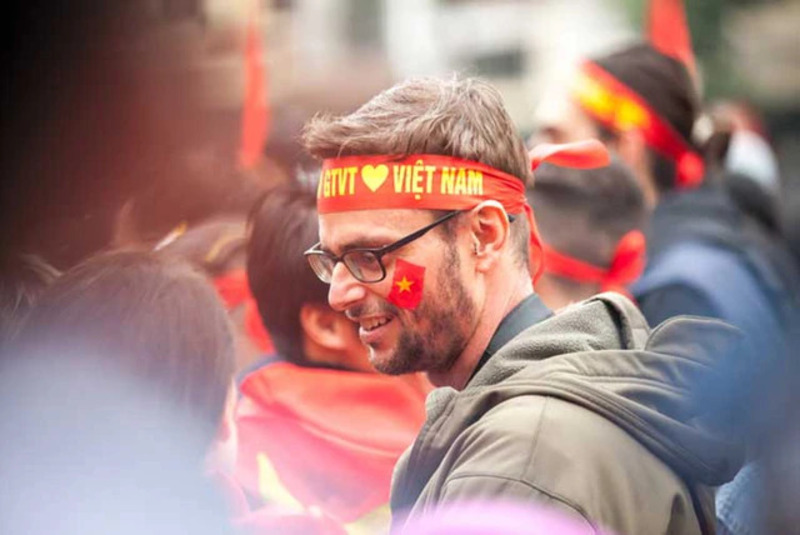
From affordability and cultural depth to human connection and daily rhythm, expat life in Vietnam offers what many didn’t realize they were missing: balance, belonging, and room to breathe. This article explores why so many foreigners choose not just to live in Vietnam—but to stay, grow, and build a life that truly feels their own.
Expats Fall in Love with Vietnam
What makes a place feel like home when it’s far from where you started? For long-term residents, the answer often hides in the everyday details. Living in Vietnam as an expat blends practical ease with emotional depth in a way few countries manage to achieve.
Vietnam doesn’t try to impress with perfection. Instead, it invites you into a lifestyle that feels human, flexible, and surprisingly grounding. Life here allows room for mistakes, slow mornings, and genuine connection.
Over time, that simplicity reshapes expectations—and turns uncertainty into comfort. For many expats, this is where living abroad stops feeling temporary and starts feeling sustainable.
A Lifestyle That Feels Lived-In, Not Rushed
One of the first things expats notice is the pace of daily life. While cities like Ho Chi Minh City and Hanoi are energetic, life here isn’t ruled by constant urgency. Meals are shared, mornings unfold slowly, and evenings often turn into conversations rather than schedules.
This is a core reason why expats love Vietnam. Life allows room to breathe. You can work with focus without burning out—and rest without guilt. For professionals and remote workers, this balance becomes a compelling reason to stay long-term.
Many expats describe the Vietnamese lifestyle as flexible rather than rigid. You adapt your routine around life—not the other way around.
Cost of Living That Enables Freedom, Not Sacrifice
Affordability may draw people in—but it’s not just about spending less. The cost of living in Vietnam for expats creates a sense of freedom that feels increasingly rare elsewhere.
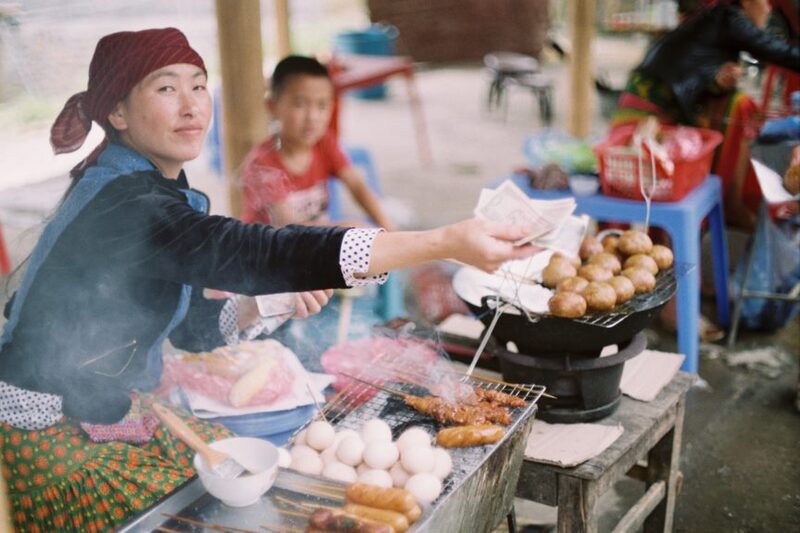
Instead of constant budgeting stress, many expats gain access to better housing in central neighborhoods, enjoy dining out without pressure, and still set aside time and money for travel or personal growth.
This financial breathing room reshapes daily life. Rather than optimizing every expense, expats can focus on experiences, relationships, and long-term plans. For many, this shift becomes a defining reason why choose Vietnam to live—not temporarily, but for the long haul.
Human Connection at the Center of Daily Life
Ask long-term residents what truly keeps them in Vietnam, and most won’t mention rent or weather. They’ll talk about people.
Vietnamese people and hospitality leave a lasting impression—not through grand gestures, but through everyday kindness. A remembered coffee order, help with directions, or a familiar smile slowly builds trust.
For many foreigners, the local lifestyle in Vietnam feels relational rather than transactional. Over time, these small interactions turn into meaningful connections. They ease cultural adaptation and help expats move from feeling like outsiders to feeling genuinely included. For those staying long-term, human connection becomes the quiet foundation of belonging.
Culture That Invites Participation, Not Perfection
Vietnamese culture doesn’t demand mastery—it invites curiosity. Newcomers aren’t expected to understand everything immediately, and effort is often valued more than accuracy. This is what makes the Vietnamese culture for expats feel welcoming rather than intimidating.
Whether it’s learning a few Vietnamese phrases, joining a neighborhood celebration, or slowly picking up unspoken social cues, the process feels forgiving. Mistakes are met with patience, not judgment.
Over time, this cultural openness helps expats redefine comfort. Cultural adaptation in Vietnam becomes less about blending in perfectly and more about showing up consistently—one interaction at a time.
A Strong, Diverse Expat Community
Vietnam is home to one of Southeast Asia’s most diverse foreign populations. Entrepreneurs, teachers, families, creatives, and retirees often share the same neighborhoods, cafés, and co-working spaces. This diversity shapes a welcoming expat community in Vietnam built on shared experience.

From visa renewals and housing searches to cultural misunderstandings, common challenges quickly turn into points of connection. Many expats find that friendships here form faster—and feel deeper—than those back home.
For long-term living in Vietnam for expats, the community becomes essential. It transforms isolation into support and everyday challenges into a shared journey of belonging.
Read more: Finding Your Tribe: Join Expat Communities in Ho Chi Minh City
Daily Life That Feels Meaningful
Every day life in Vietnam for foreigners often feels richer than expected. Simple rituals—street food breakfasts, evening walks, unplanned conversations—carry quiet meaning. Rather than constantly chasing milestones, many expats begin to value daily rhythm over distant goals.
This shift explains why expats choose Vietnam to live beyond the short term. Life here rewards presence. It encourages slowing down, noticing small moments, and appreciating what’s already there.
Over time, that awareness turns routine into fulfillment—and living abroad into a life that feels genuinely meaningful.
Growth Through Contrast and Challenge
Vietnam isn’t without its challenges. Bureaucracy, language barriers, and cultural differences can feel overwhelming—especially in the early months. Yet for many, these moments of friction become turning points. Living in Vietnam as an expat requires adaptability, patience, and humility.
Gradually, what once felt frustrating begins to build resilience. Expats often credit these experiences with personal growth they never planned for. This is why the reasons expats stay in Vietnam long-term go beyond comfort or convenience. Growth itself becomes part of the reward—and part of what keeps them here.
Redefining What “Home” Means
Perhaps the deepest reason expats fall in love with Vietnam is how it quietly reshapes their idea of home. Home becomes less about familiarity and more about alignment—with values, lifestyle, and the people around you.

For some, Vietnam creates space to slow down and redefine success. For others, it offers stability, simplicity, and a sense of grounding missing elsewhere. Either way, life in Vietnam for foreigners often feels authentic rather than performative.
Here, home isn’t something you inherit or arrive at. It’s something you build—intentionally, patiently, and in a way that finally feels like your own.
From Temporary Stay to Long-Term Belonging
Most expats arrive in Vietnam without a long-term plan. A short contract, a trial year, a “see how it goes” mindset. Yet months quietly stretch into years. Apartments become familiar. Neighborhoods gain meaning.
This gradual shift—from visitor to resident—is at the heart of expat life in Vietnam. It rarely comes from a single decision, but from small, grounding moments: knowing where to shop, who to call, where you belong on an ordinary day.
This is often when expats fall in love with Vietnam—not as a destination, but as the place where life feels genuinely lived.
Why So Many Expats Choose to Stay
When affordability, culture, community, and emotional connection come together, the reason becomes clear. Why expats love Vietnam isn’t tied to one standout feature—it’s how everyday life fits together in a way that feels sustainable.
Vietnam offers a lifestyle that supports balance, a culture grounded in human connection, a cost of living that enables choice, and a community that welcomes newcomers into real belonging.
For many expats, this combination creates something increasingly rare: a place where professional ambition and personal well-being don’t compete, but quietly reinforce each other.
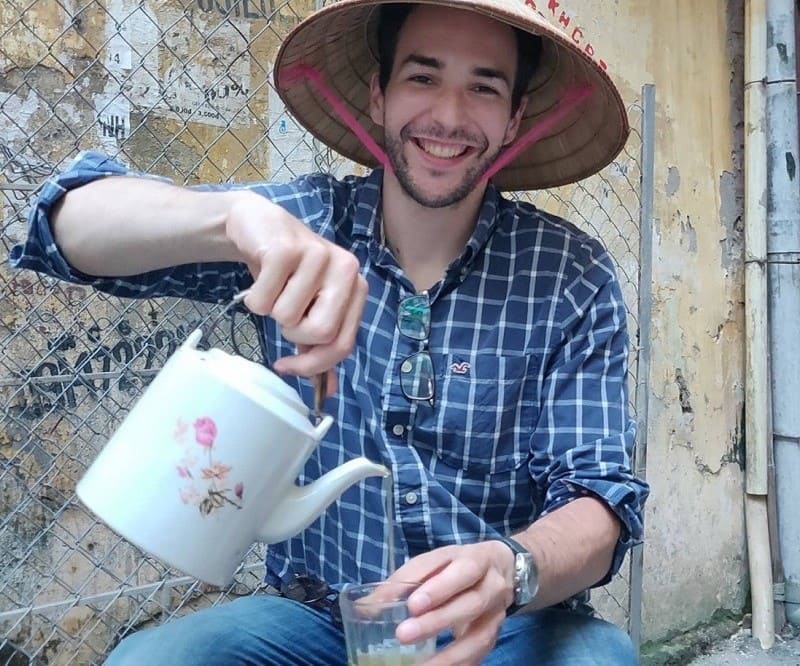
Final Thoughts: Falling in Love, One Day at a Time
Expats fall in love with Vietnam gradually—not through grand moments, but through everyday life that feels sustainable, human, and deeply lived. It happens in familiar routines, quiet connections, and a sense that life finally moves at the right pace.
Vietnam becomes a place where relationships grow naturally, and choices feel aligned rather than forced. Whether you’re building a career, raising a family, or redefining your path, the country offers space for your story to unfold.
At JHouse, we witness this transformation every day. Finding a home is only the beginning. What follows is something more lasting—a feeling of belonging. And that’s why, for so many expats, Vietnam isn’t just where they stay. It’s where they choose to build a life.
JHouse Content Team
The in-depth content development team on housing services for foreigners & Vietnamese in Vietnam. The content is simple, easy to understand, and logically arranged to bring readers useful topics and information from real experiences.
Raising a Family in Vietnam: Housing, Schools & Lifestyle
Family Life in Vietnam: Housing, Schools & Lifestyle for Expats
Raising a Family in Vietnam is no longer a fringe idea — it’s a conscious decision made by expat parents seeking stability, affordability, and a meaningful global upbringing for their children. Beyond low living costs, Vietnam offers something deeper: a family lifestyle that feels connected, balanced, and surprisingly sustainable.

But turning that possibility into long-term confidence takes more than enthusiasm. Housing choices shape daily routines. Schools influence not just education, but belonging. Lifestyle decisions determine whether Vietnam becomes a temporary chapter—or a place your family can truly call home.
This guide offers a big-picture roadmap for expat families living in Vietnam. Built on real-world experience, it connects the essential pieces—housing, schools, safety, healthcare, finances, culture, travel, and legal stability—so you can build a family life designed to last, not just adapt.
Raising a Family in Vietnam: What Matters Beyond the Basics
Raising a family abroad is never just about logistics—it’s about intention. For expat families in Vietnam, the real shift isn’t location, but mindset. You’re no longer asking, “Can we live here?” You’re asking, “How well can we live here—together, long term?”
Vietnam supports that shift in subtle but powerful ways. Neighborhoods feel social rather than isolated. Daily support systems are accessible. International education continues to expand, while weekend travel remains simple and affordable. Yet none of these elements work in isolation. Long-term success comes from understanding how they connect—and choosing with intention.
Families who thrive don’t chase perfection. They prioritize alignment: between housing and schooling, lifestyle pace and family values, short-term ease and long-term stability. That alignment is what transforms family life in Vietnam from something you manage… into something you genuinely build.
Choosing Family-Friendly Housing That Supports Daily Life
Where you live quietly defines how your family functions day to day. Housing for families in Vietnam ranges from secure condos and serviced apartments to spacious villas designed for long-term comfort—but the right choice is less about size, and more about fit.

Family-friendly neighborhoods prioritize safety, walkability, green spaces, and easy school access. In major cities, expat families gravitate toward areas that reduce commute stress, soften traffic exposure, and encourage community living rather than isolation.
Living in Vietnam with children means thinking beyond square meters. Traffic flow, school routes, noise levels, and neighborhood rhythm all shape family wellbeing. That’s why many long-term expats treat their first lease as a learning phase—exploring before committing.
A well-chosen home does more than house your family. It anchors routines, lowers daily stress, and creates the emotional foundation your family needs to truly settle.
Read more: Child-Friendly Apartments & Neighborhoods in HCMC
Education First: Finding the Right Schools for Expat Children
For expat families, choosing schools in Vietnam is often the most emotionally charged decision. Education isn’t just a service—it’s a long-term commitment to how your child grows, adapts, and thrives across cultures.
Vietnam’s international education landscape has matured rapidly. Families can now choose from well-established international curriculums, bilingual models, and alternative learning approaches—each supporting different learning styles, transitions, and future pathways.
The right fit depends on more than rankings. Are you building roots in Vietnam or planning another relocation? Do you prioritize academic outcomes, emotional development, global exposure, or a balance between them?
Families who settle most confidently align school philosophy with family values. When education supports both learning and belonging, children don’t just study in Vietnam—they grow with it.
Read more: Best International Schools In HCMC (By Age & Curriculum)
Lifestyle: Creating Balance for Parents and Children
One of Vietnam’s most underrated strengths is how naturally family life finds its balance. Daily routines feel outward-facing—children play freely with neighbors, meals stretch into conversations, and structure coexists with flexibility.
Beyond cafés and malls, family life in Vietnam extends into weekend beach trips, short nature escapes, and cultural festivals that fit school schedules. Children experience diversity not as a lesson, but as everyday life.

For parents, balance often comes through accessible support systems—domestic helpers and nannies who ease daily pressure, fresh markets that simplify meals, and communities that normalize shared parenting.
This rhythm lets families slow down without narrowing opportunity—creating space for both growth and connection.
Read more: Weekend Family Activities Around the City
Safety: Raising Children with Confidence
Safety is often a quiet, unspoken concern for expat families. Vietnam is generally considered safe, but long-term living calls for awareness—not constant worry.
For families, everyday safety is shaped less by crime statistics and more by traffic conditions, pedestrian access, and emergency readiness. Parents adapt by choosing walkable neighborhoods, setting clear boundaries for children, and learning local norms rather than pushing against them.
Over time, the community plays a growing role. In family-oriented areas, routines become visible—neighbors recognize each other, and informal watchfulness develops naturally.
In Vietnam, safety isn’t about avoiding risk altogether. It’s about gaining familiarity, building habits, and raising children with calm, informed confidence.
Read more: Safety Tips for Families Living in Vietnam – Complete Expat Guide
Healthcare for Children: Planning Beyond Emergencies
Child healthcare in Vietnam has advanced significantly, especially in major cities where private hospitals and international clinics provide reliable, English-speaking care for expat families.
The system works best when approached proactively. Establishing a trusted pediatrician, following vaccination schedules, planning dental care, and knowing where to go in emergencies should all be part of your long-term family setup—not last-minute responses.
International and regional health insurance adds flexibility, covering specialist care and travel when needed. When healthcare is planned early, parents gain more than medical access—they gain consistency, confidence, and the stability every family needs to settle in Vietnam.
Read more: Kids’ Healthcare: Hospitals & Pediatric Clinics for Expats in HCMC
Help at Home: Domestic Support That Changes Everything
For many expat families, domestic support in Vietnam quietly transforms daily life. Helpers and nannies reduce the invisible workload—freeing parents to focus on work, children, and genuine family time instead of constant coordination.

Success depends on clarity. Well-defined roles, routines, communication, and cultural understanding create trust over time. Consistency matters far more than speed.
This support isn’t about replacing parental involvement. It’s about building sustainable rhythms that prevent burnout and allow family life in Vietnam to feel balanced, supported, and realistically long-term.
Read more: Domestic Helpers and Nannies: What Expats Should Know
Culture & Identity: Raising Global, Grounded Kids
Raising bilingual or multicultural children in Vietnam offers a rare advantage—cultural fluency shaped through everyday life. Children learn flexibility, empathy, and confidence not from textbooks, but from navigating languages, traditions, and social norms naturally.
Balancing cultures doesn’t mean choosing between identities. It means creating space for children to feel rooted while staying open. Local friendships, international schools, festivals, and daily language exposure all contribute to this balance.
For many expat families, Vietnam becomes the place where children grow into global citizens—grounded emotionally, adaptable socially, and secure in who they are.
Read more: Balancing Two Cultures: Raising Multilingual Children in Vietnam
Family Budgeting: Sustainable, Not Restrictive
The cost of raising a family in Vietnam remains manageable, but long-term affordability depends on intention. Family budgeting works best when it reflects everyday realities—not short-term assumptions.
Housing, education, healthcare, childcare, and lifestyle spending all deserve a clear plan. Families who budget proactively don’t feel constrained—they feel in control.
Smart budgeting isn’t about spending less. It’s about directing resources toward what truly supports your family’s stability, growth, and long-term life in Vietnam.
Read more: Family Budgeting in Vietnam: Smart Saving for Expats
Traveling with Kids: A Country Designed for Exploration
Traveling with kids in Vietnam is unexpectedly simple. Short travel distances, varied landscapes, and family-oriented hospitality allow trips to fit naturally into school schedules and family routines.
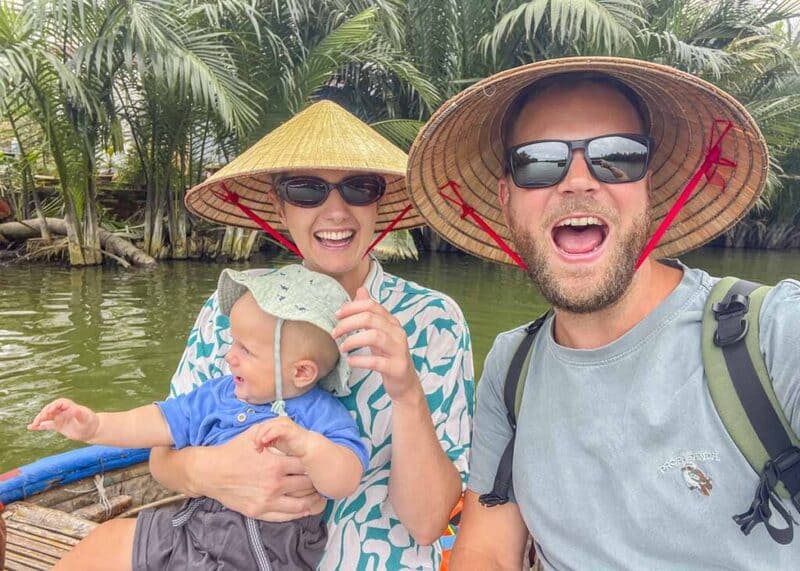
From beach towns and heritage cities to highlands and national parks, travel becomes an extension of education rather than a break from it. Children learn geography, culture, and adaptability through shared experiences.
For expat families, these journeys build connection—turning weekends and holidays into meaningful moments that often shape a child’s strongest memories of growing up in Vietnam.
Read more: Traveling with Kids in Vietnam: What Expat Families Should Expect
Legal Stability: Visas That Support Family Life
Legal status is often invisible—until it disrupts daily life. For expat families in Vietnam, family visas, dependent permits, and temporary residence cards influence everything from school enrollment to healthcare access and long-term planning.
Preparing legal documentation early reduces uncertainty as your family grows and circumstances evolve. Visas should support stability, not create friction.
When legal foundations are secure, families feel freer to settle in emotionally. Legal stability doesn’t just allow residence—it supports continuity, confidence, and a true sense of home in Vietnam.
Read more: Family Visa & Residence Card Tips for Long-Term Stay in Vietnam
Final Thoughts: Turning Family Life into Belonging
Raising a Family in Vietnam isn’t about recreating life elsewhere—it’s about shaping a life that truly fits your family. When housing, schools, lifestyle, healthcare, and legal stability align, everyday pressures ease. Children grow more adaptable. Parents feel supported. And over time, life stops feeling temporary.
At JHouse, we know that finding the right home is only the first step. Housing is the foundation—but long-term family life is the goal. We work with expat families who are ready to build not just a place to live, but a place to belong.
Vietnam doesn’t simply host families. It gives them space to grow, connect, and create a future that feels genuinely their own.
JHouse Content Team
The in-depth content development team on housing services for foreigners & Vietnamese in Vietnam. The content is simple, easy to understand, and logically arranged to bring readers useful topics and information from real experiences.
Family Visa & Residence Card Tips for Long-Term Stay in Vietnam
Family Visa Vietnam: Key Tips for Securing a Long-Term Residence Card
Vietnam has become a top destination for expat families seeking a safe, affordable, and culturally rich place to settle. But before fully enjoying life here, understanding the process of securing a family visa & residence card is essential. Navigating paperwork, visa categories, and document requirements can feel overwhelming—especially for families relocating for work, education, or long-term stability.

This guide breaks down the essentials of Family Visa Vietnam procedures and shows you how to obtain a long-term residence card for your spouse and children. With clear steps, expert tips, and practical insights, we aim to simplify the process, reduce stress, and help your family transition into life in Vietnam with confidence.
Why Expat Families Choose Vietnam for Long-Term Living
Vietnam has quickly become a long-term home for expat families thanks to its warm community, modern comforts, excellent international schools, and affordable lifestyle. Cities like Ho Chi Minh, Hanoi, and Da Nang continue to attract families seeking stability and a welcoming environment.
But to truly settle here, parents need clarity on legal status for their spouse and children. Understanding the difference between a family sponsor visa, a dependent visa in Vietnam, and a Vietnam residence card for family members is essential. With the right documents in place, families gain peace of mind, smoother daily living, and the confidence to build a long-term life in Vietnam.
Read more: Raising a Family in Vietnam: Housing, Schools & LifestyleUnderstanding the Primary Options: Family Visa & Residence Card in Vietnam
For expat families planning a long-term life in Vietnam, there are two main legal pathways to secure stable residency: the Family Visa and the Residence Card. Although often mentioned together, each serves a different purpose—and understanding how they connect is key to creating a smooth, long-term stay for your spouse and children.
1. Family Visa Vietnam (VR, TT, or dependent visa categories)
A Family Visa—commonly referred to as a dependent visa Vietnam—allows your spouse, children, or legally recognized dependents to reside in Vietnam under your sponsorship. This visa is typically the first step before applying for a Vietnam residence card for family members.
You may be eligible if:
- You hold a valid work permit, TRC, investor visa, or long-term business visa
- You can provide proof of relationship (marriage certificate, birth certificate, adoption papers)
- Your dependents are either applying from abroad or have entered Vietnam with the correct entry purpose
This option is ideal for families planning to live together for several months to multiple years, providing a solid legal foundation for long-term relocation.
2. Vietnam Residence Card for Family (TRC for spouse and children)
A Temporary Residence Card (TRC) grants your family the right to stay in Vietnam for 1–3 years without frequent visa renewals. It provides unlimited entry and exit, access to essential services, educational stability, and a stronger sense of belonging.
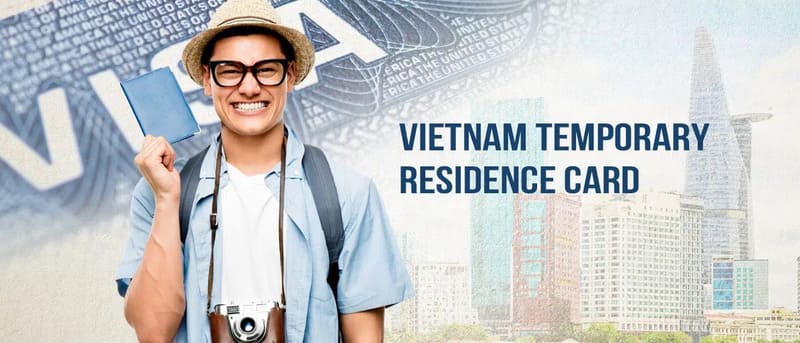
For many expat households, the TRC becomes the ultimate residency goal—removing visa extension stress and supporting deeper, long-term integration into daily life in Vietnam.
Read more: Long-Term Visa, Work Permit & TRC in Vietnam: What You Need to KnowVisa Categories for Family Sponsorship (Simple Breakdown)
Expat families in Vietnam generally rely on a few key visa types:
- TT Visa – for legally recognized spouses or children
- VR Visa – for relatives visiting for shorter stays
- Dependent visas linked to a work permit holder
- TRC for family members – offering long-term stability and multi-year residency
In most cases, if the sponsoring parent has a valid work permit, investor visa, or business visa, dependents can qualify for TT visas or TRCs.
Who Qualifies for a Family Visa or Residence Card?
Eligibility for family visas and TRCs typically includes legally recognized spouses, children under 18, and adult children with disabilities. In some cases, parents may also qualify, though the process is more complex and handled case-by-case.
Regardless of the sponsor’s visa type, Vietnamese immigration places strong emphasis on proving family relationships. All documents—such as marriage certificates or birth certificates—must be properly notarized, legalized, and translated to meet official requirements.
Required Documents for a Family Visa or Residence Card
Preparing the right paperwork is often the biggest challenge for expat families in Vietnam, especially when documents must be legalized and translated before submission. Below is a practical checklist to prevent delays:
For the sponsor (main visa holder):
- Passport + current visa/TRC
- Work permit or work permit exemption (if applicable)
- Investor documents (if applicable)
- Temporary residence confirmation from the local police
- proof of registered address

For the spouse or dependent:
- Passport with remaining validity
- Marriage certificate (legalized + translated)
- Birth certificate for children (legalized + translated)
- Visa or entry stamp matching the correct purpose
- 2 passport photos (white background)
For the TRC application:
- Completed NA6, NA8 forms
- Payment of government fees
- Evidence of cohabitation (sometimes requested)
Families who prepare core documents early, particularly legalized marriage and birth certificates, often experience much faster processing and fewer administrative issues.
Step-by-Step: How to Apply for a Family Visa in Vietnam
Below is a clear, practical roadmap for expats bringing their spouse or children to Vietnam—or transitioning from a short-term visa to long-term residency.
Step 1: Confirm your eligibility as a sponsor. Your current visa must support family sponsorship. Work permit holders, investors, and business visa holders typically qualify.
Step 2: Prepare and legalize relationship documents. Marriage and birth certificates must be legalized and translated—a step that may take 1–3 weeks abroad, so many families complete it before arriving.
Step 3: Apply for a Family Visa (TT/VR/Dependent). Dependents may enter Vietnam with the correct purpose or, in some cases, convert their existing visa from within Vietnam.
Step 4: Submit the TRC application. Once in Vietnam, dependents can apply for a residence card valid for up to three years, depending on the sponsor’s status.
Step 5: Receive the TRC and settle in. With the card issued, your family can stay long-term without frequent visa renewals—ensuring stability and peace of mind.
Common Challenges Expats Face (And How to Avoid Them)
Family visa and TRC applications are often delayed by a few recurring issues. The most common include:
- Entering Vietnam with the wrong visa purpose — a tourist visa cannot always be converted, often resulting in costly re-entry trips.
- Missing legalized documents, especially marriage or birth certificates, that must be authenticated and translated before submission.
- Residence address issues when landlords forget to register temporary residence with local police, a mandatory requirement for TRC approval.

- Frequent renewals — families relying on tourist visas experience unnecessary stress, while a TRC offers far better long-term stability.
- Not knowing which visa type applies to them, many newcomers are confused by terms like dependent visa, family sponsor visa, or family residence permit.
Understanding the correct pathway helps families save time, money, and needless frustration.
Long-Term Stay Options for Expat Families
Depending on your family’s long-term goals, you can choose between several pathways:
- A Family Visa for short- to mid-term stay
- A TRC for spouse and children for long-term stability
- Transitioning from a visa to a TRC after obtaining a work permit
- Investor-based options for multi-year residency
For families settling in Vietnam for school, work, or business, the TRC remains the most secure and stress-free choice.
How Long Does It Take to Process a Family TRC?
Typical processing times for expat families are:
- Family Visa (TT/VR): 5–7 working days
- TRC application: 7–15 working days
- Document legalization: varies by home country
During peak months (June–September), processing may take longer. Planning ahead and preparing all documents in advance can help ensure a smoother, faster approval for your family’s long-term residence in Vietnam.
Expert Tips to Make Your Process Faster
To streamline your family visa and TRC application, start by:
- Start legalizing all relationship documents before arriving in Vietnam
- Ensure your landlord registers your temporary residence
- Maintain consistent spelling across every form
- Keep both digital and printed copies of all paperwork
- Apply for the TRC early — before your visa expires
- Work exclusively with licensed visa consultants.

Following these steps can help families avoid delays, reduce stress, and ensure a smooth long-term residency process in Vietnam.
Final Thoughts: Settling in Vietnam with Confidence
Applying for a Family Visa and Residence Card may seem complex initially, but with careful preparation, the process becomes much smoother. Proper documentation, understanding visa options, and timely TRC applications allow families to secure long-term residency, minimize renewals, and enjoy a stable, comfortable life in Vietnam.
Whether bringing your spouse, caring for children, or planning a multi-year stay, Vietnam offers a welcoming environment for expat families ready to call it home.
In Ho Chi Minh City, JHouse can help you find the right rental home for your family, making your relocation easier and allowing you to focus on settling in with confidence.
JHouse Content Team
The in-depth content development team on housing services for foreigners & Vietnamese in Vietnam. The content is simple, easy to understand, and logically arranged to bring readers useful topics and information from real experiences.
Traveling with Kids in Vietnam: What Expat Families Should Expect
Traveling with Kids in Vietnam: A Helpful Guide for Expat Families
Traveling with kids in Vietnam is more than a typical family trip — it’s a journey full of discovery, cultural immersion, and unforgettable learning experiences. For expat families, navigating Vietnam with kids means balancing safety, comfort, and local adventures while introducing children to a vibrant new world full of sights, sounds, and flavors.

From weekend escapes to long-term explorations, this guide offers practical tips, kid-friendly destinations, and expert insights to help you travel confidently, reduce stress, and create lasting memories.
Embrace the excitement, plan wisely, and make every family trip in Vietnam not just enjoyable, but truly transformative — enriching your family’s life while fostering curiosity, adaptability, and a deeper connection to Vietnamese culture.
Why Traveling with Kids in Vietnam Is Different — in a Good Way
Vietnam is vibrant, layered, and surprisingly family-friendly — but traveling with kids here is different from the typical Western experience. Tropical weather, bustling streets, and rich local traditions encourage families to slow down, observe, and experience travel through an immersive cultural lens.
For expat families, each trip is an opportunity for children to grow as curious global citizens: tasting diverse foods, embracing local customs, learning flexibility, and understanding community life.
From Ho Chi Minh City’s dynamic energy to Da Nang’s relaxing beaches and the peaceful rice fields of the Mekong Delta, Vietnam inspires exploration, sparks imagination, and helps kids develop confidence, adaptability, and cultural awareness while creating unforgettable family memories along the way.
Read more: Raising a Family in Vietnam: Housing, Schools & LifestyleTraveling with Kids in Vietnam: What Expat Families Should Expect
Traveling with kids in Vietnam is joyful — but it comes with unique expectations. Understanding what expat families typically encounter helps you prepare for smoother, safer, and more meaningful journeys.
1. A Family-Friendly Culture Wherever You Go
In Vietnam, children are warmly welcomed, making traveling with kids a unique joy. Locals often smile, interact with young ones, and offer small acts of kindness, while restaurants accommodate families and staff remain patient.
For expat families, this openness means you rarely feel out of place, even in smaller towns. Kids can fully engage with Vietnamese culture through everyday experiences — from markets and festivals to neighborhood interactions.
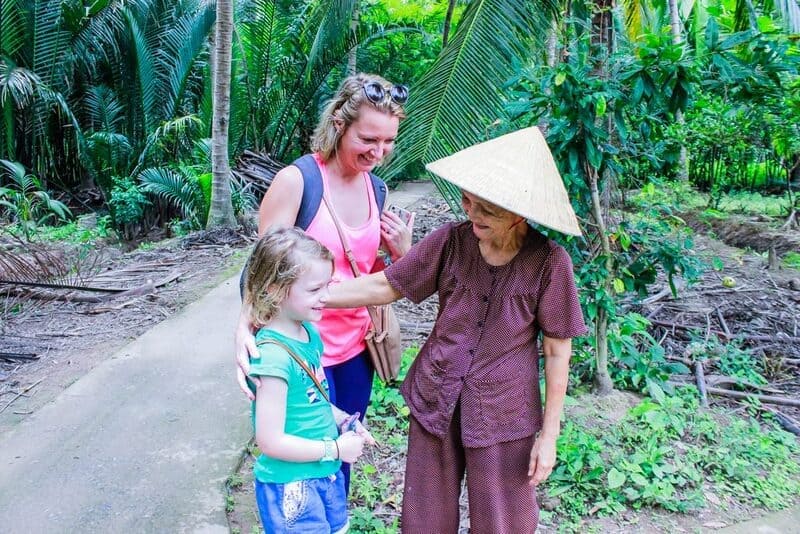
Such genuine hospitality not only makes travel easier but also creates memorable, enriching experiences, helping children grow curious, confident, and culturally aware while exploring Vietnam safely and joyfully.
2. Transportation: How to Move Around Safely
Getting around Vietnam is an adventure, but safety should always be the top priority when traveling with kids. Expat families have several reliable options:
- GrabCar or taxi — convenient and safe for city trips.
- Private car services for intercity travel.
- Trains for comfortable, child-friendly, longer journeys.
- Domestic flights for quick travel between major cities like HCMC, Da Nang, Hanoi, or Phu Quoc.
While motorbikes are common, they are only recommended for families with experience, proper helmets, and confidence in navigating busy streets. For most expat families, using cars ensures a stress-free, comfortable, and secure travel experience, letting children enjoy every journey while parents focus on the adventure ahead.
3. Accommodation That Works for Kids
Vietnam offers a wide variety of family-friendly accommodation for expat families traveling with kids. Options include
- Serviced apartments for weekend city trips
- Beachfront resorts with kids’ clubs in Da Nang, Nha Trang, Phu Quoc
- Boutique hotels in Hoi An, Hue, and Da Lat
- Eco-lodges in Sapa or Mai Chau for cultural and nature-based learning
When traveling with younger children, prioritize spacious rooms, pool safety, proximity to hospitals or international clinics, kid-friendly dining, and blackout curtains for naps. For families living in Vietnam long-term, exploring different regions not only ensures comfortable, safe stays but also helps children engage with local culture and understand the diverse country they now call home.
Read more: Child-Friendly Apartments & Neighborhoods in HCMC
4. Food: Delicious, Accessible, and Kid-Friendly
Vietnamese cuisine is fresh, flavorful, and often surprisingly kid-approved, making traveling with kids in Vietnam a tasty adventure for expat families. Popular kid-friendly dishes include: phở gà, cơm gà, bánh mì, stir-fried noodles, and fresh fruits like mango, banana, and dragon fruit.

For picky eaters, major cities and tourist hotspots offer international restaurants, supermarkets with imported goods, and allergy-friendly options.
Long-term expat families can safely introduce children to street food culture, sparking curiosity, building confidence, and creating memorable culinary experiences while exploring Vietnam together.
5. Health, Hydration & Weather Awareness
Traveling with kids in Vietnam requires extra attention to health, hydration, and weather, especially under the tropical heat and humidity. Expat families should pack:
- Sunscreen (SPF 50+)
- Hats and lightweight clothing
- Refillable water bottles
- Electrolyte packets
- Mosquito repellent
- Travel insurance that covers children
Families with babies should bring formula, diapers, and any necessary medication, though major cities stock international brands. While urban areas offer high-quality private clinics, rural regions need extra planning.
Being well-prepared ensures safe, comfortable, and worry-free adventures, letting children enjoy outdoor activities while parents focus on a stress-free travel experience.
Read more: Kids’ Healthcare: Hospitals & Pediatric Clinics for Expats in HCMC
6. Kid-Friendly Destinations Worth Exploring
Vietnam offers an abundance of family-friendly destinations that blend fun, culture, and adventure, perfect for expat families traveling with kids. Here are some top picks for expat families:
Ho Chi Minh City (HCMC) • Suoi Tien Theme Park • KizCiti • Waterbus rides • Botanical Garden & Zoo (go early morning)
Da Nang & Hoi An • Long beaches • Ba Na Hills / Sun World • Hoi An Ancient Town lantern strolls • Coconut boat tours
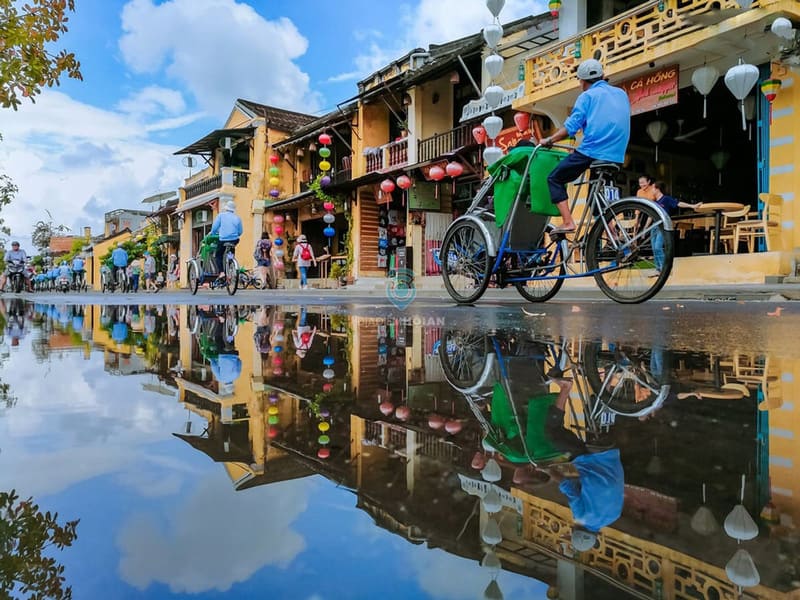
Hanoi • Hoan Kiem Lake • Museum of Ethnology • Bat Trang Ceramic Village • Ninh Binh day trips
Phu Quoc • Clear beaches • Family-friendly resorts • VinWonders theme park
Da Lat • Pine forests • Fairy-tale gardens • Farm visits
These destinations are safe, accessible, and packed with engaging activities for toddlers through teenagers, ensuring memorable experiences for the whole family.
7. Safety Tips Every Expat Family Should Know
Safety is essential when traveling with kids in Vietnam. Expat families can ensure smooth, stress-free adventures by following key tips:
- Use cars with proper seatbelts or request child seats.
- Teach kids to stay close in crowded areas.
- Always monitor children near water (beaches, pools, rivers).
- Avoid tap water — opt for filtered or bottled water.
- Keep a small medical kit handy during trips.
- Always double-check weather conditions in rainy or typhoon seasons.
- If visiting rural areas, plan for limited English support and long distances between medical facilities.
These precautions help families travel confidently, enjoy every moment, and keep children safe while exploring Vietnam.
Read more: Safety Tips for Families Living in Vietnam – Complete Expat Guide
8. Useful Apps & Tools for Expat Parents
Traveling with kids in Vietnam becomes much easier for expat families with the right digital tools:
- Grab helps with rides and food delivery
- Google Maps assists with walking, biking, and transit
- Momo or ZaloPay ensures quick payments
- AirVisual monitors air quality
- Translate apps bridge language gaps with locals

For weekend travel planning:
- Traveloka, Agoda, Booking.com
- Facebook groups for expat travel tips
- Local parenting communities
These apps and tools help families navigate transportation, language, and logistics with ease, confidence, and peace of mind while exploring Vietnam.
9. Weekend Trips: The Secret to Expat Family Balance
Weekend trips are a vital part of life for expat families traveling with kids in Vietnam, offering balance, connection, and cultural immersion. Short, easy trips let children explore the country’s diversity while giving parents a refreshing break from city routines. Popular ideas include:
- Vũng Tàu for a beach escape
- The Mekong Delta for boat rides and local culture
- Mui Ne’s sand dunes
- Ninh Binh’s mountains and temples
- Ha Long Bay cruises that are child-friendly
These mini-adventures create lasting memories, foster curiosity, and help families enjoy Vietnam beyond the urban hustle.
Read more: Weekend Family Activities Around the City
10. Cultural Awareness Helps Kids Adapt Faster
Traveling with kids in Vietnam helps expat families foster cultural awareness and support long-term adaptation. Families can help kids adapt by:
- Visiting markets & local festivals
- Joining community events
- Learning simple Vietnamese phrases
- Encouraging curiosity about traditions
- Helping kids connect with local friends

Kid-friendly travel becomes more than sightseeing — it’s a bridge between cultures, allowing children to adapt confidently, embrace diversity, and build meaningful connections while enjoying their unique expat childhood in Vietnam.
Read more: Balancing Two Cultures: Raising Multilingual Children in VietnamFinal Thoughts: Let Travel Strengthen Your Family’s Life in Vietnam
Traveling with kids in Vietnam is an opportunity to create meaningful family experiences, foster curiosity, and connect deeply with the country you now call home. From beaches and ancient towns to weekend escapes, each journey nurtures your family’s resilience, confidence, and global awareness
For expat families, these adventures help children grow adaptable, open-minded, and culturally aware. With careful preparation, safety awareness, and active cultural engagement, traveling with kids in Vietnam becomes not just manageable but transformative.
Whether you’re settling long-term in HCMC or using it as your base to explore, JHouse can help your family find the perfect home in the city, making it easier to travel, connect, and feel truly at home while living in Vietnam.
JHouse Content Team
The in-depth content development team on housing services for foreigners & Vietnamese in Vietnam. The content is simple, easy to understand, and logically arranged to bring readers useful topics and information from real experiences.
Family Budgeting in Vietnam: Smart Saving for Expats
Smart Family Budgeting in Vietnam: Save More, Stress Less
Managing finances as an expat can feel overwhelming, especially when raising a family in a new country. Family budgeting in Vietnam is not just about tracking expenses—it’s about creating a smart plan that balances comfort, opportunity, and long-term financial security.

From housing and schooling to groceries, transportation, and weekend activities, knowing how to allocate your resources wisely helps families enjoy life in Vietnam without stress or surprise costs.
This guide shares practical tips, real-world examples, and actionable strategies to help you save more, spend smarter, and build a sustainable budget that works for your family—so you can focus on experiences, growth, and peace of mind in your new home.
Why Family Budgeting in Vietnam Matters
For expats, living abroad is often a dream—but without careful planning, it can quickly turn into financial stress. Family budgeting in Vietnam is essential to make smart choices about housing, schooling, healthcare, transportation, and lifestyle while keeping your savings goals on track.
Many newcomers underestimate costs like utilities, private school fees, or weekend activities, which can easily derail even a well-planned budget. Effective budgeting doesn’t just control spending—it gives families freedom and confidence to seize opportunities, whether exploring the country, enrolling children in international schools, or investing in a new home.
Ultimately, mastering family budgeting in Vietnam creates clarity, flexibility, and long-term peace of mind for your expat lifestyle.
Read more: Raising a Family in Vietnam: Housing, Schools & Lifestyle1. Assess Your Expenses and Set Realistic Goals
Before creating a monthly budget, it’s essential to carefully assess your expenses and set realistic financial goals. Track your current spending for at least one month across key categories:
- Housing: Rent or mortgage, utilities, internet, maintenance
- Food & Dining: Groceries, dining out, coffee, snacks
- Transportation: Gas, taxis, Grab, car maintenance
- Education: School fees, extracurricular activities, tutoring
- Healthcare: Insurance premiums, doctor visits, medications
- Entertainment & Travel: Weekend trips, movies, events
- Savings & Emergency Fund: Unexpected expenses, future investments

Next, consider what matters most for your family: Are you prioritizing schooling quality, housing location, or saving for larger investments? Clarifying your priorities upfront helps guide spending decisions, ensures your family budgeting in Vietnam is realistic, and creates a clear roadmap to manage finances with confidence and peace of mind.
2. Housing Costs: Finding Comfort Without Overstretching
Housing is often the largest expense for expat families in Vietnam. Smart saving strategies for expats start with choosing the right home for your needs. Options vary depending on location, family size, and desired amenities:
- Serviced Apartments: Convenient, fully furnished, ideal for short-term or transition periods.
- Condos: Secure, modern, suitable for families, often in expat-friendly neighborhoods.
- Villas: Spacious, private, and perfect for families wanting outdoor space.
- Shared Housing: Budget-friendly for smaller households or solo parents.
Monthly rent can range from $400 for a one-bedroom apartment in provincial cities to $1,500+ for larger family-friendly condos in Ho Chi Minh City or Hanoi. Choosing wisely not only balances comfort with long-term savings but also reduces commuting costs and ensures proximity to schools, supermarkets, and medical facilities—saving both money and valuable time in your daily life.
Read more: Child-Friendly Apartments & Neighborhoods in HCMC
3. Groceries and Dining: Save Without Sacrificing Quality
Food is a daily necessity, but spending on groceries and dining out can quickly add up. Expat families can adopt smart strategies to save without sacrificing quality:
- Shop at local markets for fresh produce, meats, and seafood—often cheaper than supermarkets.
- Plan meals ahead to minimize food waste and curb impulse purchases.
- Cook at home more frequently, reserving dining out for weekends or special occasions.
- Compare prices online or buy staples like rice, cooking oil, and pasta in bulk.

Monthly food expenses for a family of four typically range from $400–$800, depending on lifestyle and location. Being intentional about groceries and meals helps maintain household finances while still enjoying diverse, high-quality food every day.
4. Transportation: Smart Choices to Reduce Costs
Whether commuting for work or school, managing household expenses in Vietnam includes transportation planning. Options include:
- Motorbikes: Affordable, flexible, and widely used, with monthly costs around $100–$300 including fuel and maintenance.
- Cars: Comfort and practicality for families, but with higher upfront and upkeep costs.
- Ride-hailing apps: Grab and Be are convenient alternatives for occasional trips.
Many expat families combine these methods—using motorbikes for daily commutes and ride-hailing for weekends—to balance convenience with efficiency. Smart planning in transportation not only reduces monthly expenses but also frees up resources for other family priorities.
5. Education and Childcare: Budgeting for the Future
Education is a major consideration for expat families and a crucial part of family budgeting in Vietnam. International school tuition can range from $5,000 to $20,000 per year depending on curriculum, grade, and location. To plan effectively:
- Researching school fees early and incorporating them into annual budgets.
- Exploring additional costs: uniforms, transport, extracurriculars, and school supplies.
- Considering alternative schooling options like bilingual programs or smaller private schools for cost savings.
Childcare, babysitting, or hiring nannies also represent recurring expenses, but choosing reliable support ensures peace of mind and improves overall family quality of life. Smart planning in education and childcare helps maintain financial stability while investing in your children’s future.
Read more: Best International Schools In HCMC (By Age & Curriculum)
6. Healthcare: Protecting Your Family While Staying on Budget
Healthcare is a key part of family budgeting in Vietnam, ensuring your family stays healthy without overspending. Most expats rely on private hospitals and clinics for faster, English-speaking service.

Choosing the right insurance is essential: international plans like Cigna or Allianz offer comprehensive coverage for families and worldwide travel, while local expat-focused plans such as Pacific Cross Vietnam are more affordable yet still cover routine care and emergencies.
Monthly costs typically range from $50–$150 per person. Smart budgeting allocates funds for regular check-ups, preventive care, and unexpected medical needs, giving your family both financial security and peace of mind.
Read more: Kids’ Healthcare: Hospitals & Pediatric Clinics for Expats in HCMC
7. Entertainment and Lifestyle: Balanced Spending
Living well doesn’t mean sacrificing fun. Smart saving strategies for expats include balancing lifestyle choices with budget goals:
- Prioritize experiences over material purchases, e.g., weekend trips or family outings.
- Take advantage of free or low-cost activities: parks, cultural festivals, and local events.
- Set aside a dedicated entertainment fund to prevent overspending.
Being intentional about lifestyle spending ensures your family enjoys life to the fullest, creating lasting memories while maintaining financial stability and aligning with long-term savings goals. Smart choices make leisure both rewarding and sustainable.
Read more: Weekend Family Activities Around the City
8. Savings and Emergency Fund: Financial Safety Nets
No expat budget is complete without a solid buffer, making family budgeting in Vietnam proactive and stress-free.
Experts recommend setting aside at least 10–20% of monthly income for savings and emergencies, using separate accounts to distinguish short-term needs from long-term goals, and planning for rare but costly events such as visa renewals, medical emergencies, or sudden travel.
Maintaining a dedicated emergency fund not only protects your family from unexpected financial shocks but also provides peace of mind and confidence in everyday spending. Smart saving strategies create a stable foundation for long-term financial security and freedom.
9. Smart Tools and Apps for Family Budgeting
Several digital tools make managing finances easier and more efficient:
- Banking apps: Vietcombank, Techcombank, and ACB allow account tracking and seamless transfers.

- Budgeting apps: Spendee, Wallet, or Mint help categorize expenses and track monthly spending.
- Payment apps: Momo and ZaloPay simplify daily transactions and bill payments.
Using these tools integrates household finances into everyday life, making saving and expense tracking intuitive, consistent, and stress-free. With the right digital support, expat families can manage their budget confidently, reduce errors, and focus on enjoying life in Vietnam while staying financially organized.
10. Long-term Planning: Beyond Monthly Budgets
While daily and monthly budgeting is essential, family budgeting in Vietnam also requires long-term planning to secure sustainable financial health. Expat families should:
- Saving for major milestones such as purchasing a home, funding children’s education, or planning for retirement.
- Exploring appropriate investment opportunities, like local property or stocks, can further strengthen financial stability.
- Periodically reviewing and adjusting the budget ensures it aligns with lifestyle changes or unexpected costs.
By combining short-term discipline with long-term foresight, families can confidently manage their finances, achieve key goals, and enjoy a fulfilling life in Vietnam without constant financial stress.
Read more: Open a Bank Account in Vietnam: A Guide for ExpatsFamily Budgeting in Vietnam – A Step-by-Step Guide
To summarize, here’s a practical roadmap for effective family budgeting in Vietnam:
- Track your expenses: Record all spending for one full month to understand your baseline.
- Set priorities and goals: Clarify what matters most—housing comfort, education quality, or lifestyle experiences.
- Allocate funds smartly: Divide your budget across housing, food, education, transport, healthcare, and entertainment.

- Use digital tools: Leverage budgeting apps and online banking for accuracy and convenience.
- Save proactively: Build an emergency fund and contribute to long-term goals such as education or retirement.
- Review and adjust: Revisit your budget regularly as income, routines, and family needs evolve.
This simple, structured approach empowers expat families to make confident financial decisions and enjoy a stable, fulfilling life in Vietnam.
Final Thoughts: Smart Saving Leads to Peace of Mind
Smart family budgeting in Vietnam isn’t about strict austerity—it’s about planning with intention, spending wisely, and building financial habits that support your long-term expat journey.
When you understand local costs and set clear priorities, everyday decisions around housing, food, education, transportation, and healthcare become easier and more confident. With the right system in place, your family can enjoy meaningful experiences, stay prepared for the unexpected, and thrive in a balanced, sustainable lifestyle.
Take control of your finances today and transform stress into confidence. Your family’s new chapter in Vietnam deserves both comfort and smart financial planning—so budget wisely, save effectively, and embrace the journey ahead.
And if you ever need guidance choosing the right home—one of the biggest parts of any family budget—JHouse is always here to help make life in Vietnam easier and more comfortable.
JHouse Content Team
The in-depth content development team on housing services for foreigners & Vietnamese in Vietnam. The content is simple, easy to understand, and logically arranged to bring readers useful topics and information from real experiences.
Balancing Two Cultures: Raising Multilingual Children in Vietnam
Raising Bilingual Children in Vietnam: Balancing Cultures Confidently
Raising bilingual children in Vietnam is more than teaching language skills—it’s about guiding your kids through the rich, sometimes challenging mix of cultures around them. Many parents worry about maintaining heritage language while helping children thrive in Vietnamese and international environments.

Whether your goal is nurturing multilingual children who excel academically, socially, and emotionally, or creating a home where both heritage and local languages flourish naturally, this guide offers practical strategies and insights.
With actionable tips, real-life examples, and cultural guidance, families can confidently support their children’s language development and cultural growth, ensuring a well-rounded, resilient, and globally-minded upbringing in Vietnam.
Raising Multilingual Children in Vietnam: Key Benefits and Insights
Raising multilingual children in Vietnam provides a unique chance for cultural immersion and practical language growth. Vibrant cities, rich traditions, and a growing international community create an environment where children can learn Vietnamese alongside other languages naturally.
Many parents worry about balancing heritage language with local fluency, but early exposure helps children become linguistically skilled and culturally aware. Multilingual kids often enjoy cognitive advantages, including enhanced problem-solving, creativity, and memory, while developing empathy, adaptability, and a strong identity.
For families living abroad, raising multilingual children in Vietnam ensures that kids maintain ties to their roots while thriving socially, academically, and emotionally in a multicultural environment.
Choosing the Right Approach to Bilingual Parenting
There’s no one-size-fits-all formula for raising bilingual children, but adopting strategies that honor both languages and cultures is essential. Popular approaches include:
- One Parent, One Language (OPOL): Each parent consistently speaks a different language, helping children differentiate languages and achieve balanced development.
- Minority Language at Home (MLAH): Parents use their native language at home, while children are exposed to the local language at school and socially, ensuring heritage language retention.
- Time and Place Strategy: Setting specific times or contexts for each language encourages proficiency without confusion.

In Vietnam, these methods adapt seamlessly to daily life. Engaging with local communities, enrolling in international schools, or joining bilingual playgroups gives children practical, enjoyable exposure to multiple languages while supporting cultural confidence.
Creating a Culturally Balanced Home
Balancing cultures goes beyond language—it’s about lifestyle, traditions, and values. Many parents worry that their children may lose touch with their heritage or struggle to fit in locally. To cultivate cultural balance at home, consider these steps:
- Celebrate Both Cultures: Observe holidays, cook traditional meals, and share customs from your heritage and Vietnamese culture to create a sense of belonging.
- Language-Rich Environment: Provide books, music, and media in both languages to reinforce bilingual skills naturally.
- Social Integration: Arrange playdates with local and international peers to enhance communication and adaptability.
- Consistent Routines: Incorporate reading, conversation, and cultural activities daily, making bilingualism seamless.
These practices help children develop empathy, confidence, and a strong multicultural identity.
Raising Multilingual Children – Practical Tips for Expat Families in Vietnam
Raising multilingual children in Vietnam takes thoughtful planning, especially for expat families navigating a new culture. Many parents worry their kids may fall behind in language skills or struggle to connect locally. To make bilingual parenting effective, try these strategies:
- Bilingual or International Schools: Programs like ISHCMC, BIS, and UNIS Hanoi teach English while exposing children to Vietnamese.
- Language-Savvy Tutors or Nannies: Specialized helpers ensure consistent practice.
- Community Resources: Libraries, cultural centers, and expat networks offer workshops and events for language and cultural growth.
- Daily Practice at Home: Encourage speaking both languages during meals, storytelling, or playtime, using positive reinforcement.
- Technology & Media: Educational apps, cartoons, and audiobooks supplement learning.

These steps help children gain fluency, cultural competence, and confidence, preparing them for a global future.
Understanding Common Challenges and How to Overcome Them
Raising bilingual children comes with real challenges, and many parents worry about language confusion or cultural gaps. Common obstacles include:
- Language Mixing: Children may blend languages at first. Gently correct and model proper usage consistently.
- Limited Exposure: If one language is less frequent, schedule regular practice and social interactions to bridge gaps.
- Cultural Tension: Kids may feel torn between home and local cultures. Open conversations and shared activities help them embrace both identities.
- Consistency Across Caregivers: When grandparents, nannies, or teachers use different languages, clear guidelines ensure smooth communication.
By anticipating these challenges, expat parents in Vietnam can support their children’s language development, cultural confidence, and emotional well-being effectively.
The Role of Community and Social Networks
Vietnam offers a growing network of expat communities, cultural centers, and international programs, which are invaluable for families raising multilingual children. Many parents worry that kids may lack real-life language practice or social connections. Engaging with local and international communities provides:
- Language Practice: Playgroups, storytimes, and cultural events encourage natural use of multiple languages.
- Support Networks: Parents share strategies, experiences, and resources for effective bilingual parenting.
- Cultural Exposure: Interacting with diverse peers fosters social skills, adaptability, and cultural literacy.
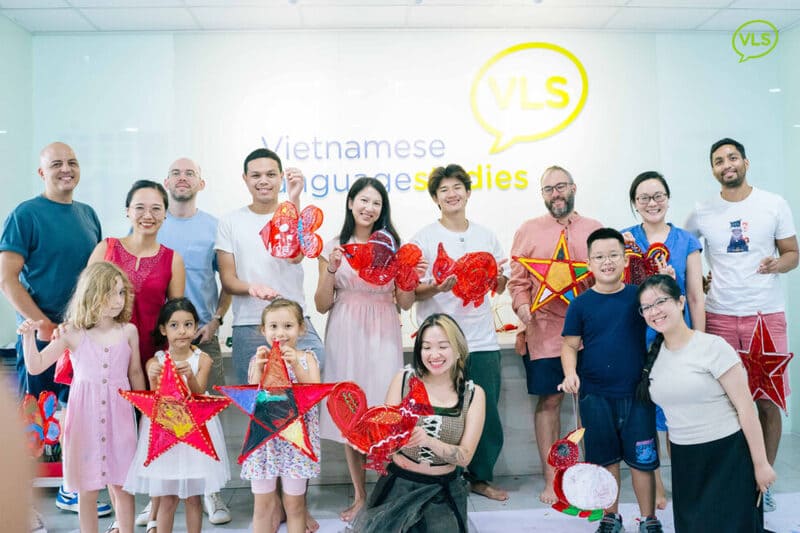
Online platforms like Facebook groups (Expats living & working in Vietnam, Foreigners in Saigon, Hanoi Massive), InterNations, and Meetup make arranging playdates and community engagement easier, enriching children’s multilingual development and confidence.
Read more: Finding Your Tribe: Join Expat Communities in Ho Chi Minh City
Making Education Work for Multilingual Growth
Education plays a crucial role in raising multilingual children in Vietnam. Many parents worry their kids might fall behind in language or struggle to balance multiple cultures. To support multilingual growth:
- School Choice: Select bilingual, international, or local Vietnamese schools based on language goals and family priorities.
- Extracurricular Activities: Music, drama, sports, and cultural classes reinforce language retention and social confidence.
- Parental Involvement: Active engagement in homework, reading, and school events strengthens language skills.
By carefully choosing schools and activities, parents help children excel academically while maintaining strong bilingual abilities.
Read more: Best International Schools In HCMC (By Age & Curriculum)Long-Term Benefits of Raising Bilingual Children
Raising bilingual children in Vietnam offers lifelong advantages that go far beyond language skills. Many parents hope their kids will thrive academically, socially, and culturally, while building confidence in a multicultural world. Key benefits include:
- Cognitive Advantages: Multilingual children show stronger problem-solving, creativity, and executive function.
- Cultural Agility: They navigate multiple cultures with ease, fostering empathy and global awareness.
- Career Opportunities: Fluency in several languages opens doors to international education and careers.
- Personal Identity: Children gain pride in their multicultural background, enhancing resilience and self-esteem.

These skills equip children to succeed personally, academically, and professionally throughout life.
Practical Tips for Daily Life in Vietnam
Raising multilingual children in Vietnam becomes easier with consistent, creative daily practices. Many parents worry their kids may miss opportunities to use both languages or connect with local culture. Practical tips include:
- Everyday Language Use: Shopping, cooking, and outdoor play become natural moments for bilingual conversation.
- Celebrate Local Culture: Attend festivals, explore museums, and learn Vietnamese history to deepen cultural understanding.
- Travel Locally: Weekend trips expose children to dialects, customs, and geography, enhancing learning organically.
- Peer Interaction: Arrange playdates with both Vietnamese and international children to strengthen social and language skills.
Consistency and creativity make bilingual parenting rewarding and achievable.
Read more: Raising a Family in Vietnam: Housing, Schools & LifestyleConclusion: Raising Bilingual Children in Vietnam with Confidence
Raising bilingual children in Vietnam is a journey full of opportunities, challenges, and rewards. By combining language learning with cultural experiences, supporting education, engaging with community resources, and keeping consistent routines, expat parents can nurture children who thrive both at home and globally.
With careful planning and balance, children develop fluency, empathy, and resilience, confidently navigating multiple cultural worlds. Raising multilingual children is not just about language—it’s about building bridges between cultures and fostering lifelong skills.
For families settling in Vietnam, creating the right home environment is key. Whenever you need a supportive living space in Ho Chi Minh City, JHouse is ready to help you find the perfect apartment to support your family’s journey.
JHouse Content Team
The in-depth content development team on housing services for foreigners & Vietnamese in Vietnam. The content is simple, easy to understand, and logically arranged to bring readers useful topics and information from real experiences.
Domestic Helpers and Nannies: What Expats Should Know
Domestic Helpers & Nanny Services for Expats: Key Tips Before Hiring
Domestic helpers and nannies are often the first major decision expat families face when settling in Vietnam. From understanding local expectations to navigating contracts, childcare routines, and cultural differences, finding trustworthy household support can feel overwhelming — especially in the early months of adjusting to Ho Chi Minh City.

This guide simplifies everything you need to know: real costs, common service types, household responsibilities, safety checks, and insider tips to help you avoid costly mistakes. Whether you need a part-time helper, a live-in housekeeper, or a full-time nanny, here’s how to confidently choose the right support for your family’s daily life.
Domestic Helpers & Nannies in Vietnam — What Expat Families Should Know
Domestic helpers and nannies in Vietnam play an essential role for many expat families navigating busy routines in Ho Chi Minh City. While hiring household support is common among local families, expats often find it especially helpful for maintaining work–life balance, building stability at home, and easing the transition into a new culture.
But choosing the right helper goes far beyond availability — it requires understanding daily responsibilities, realistic expectations, communication styles, and the cultural norms that shape employer–employee relationships in Vietnam. Below is what every expat family should know before hiring.
Read more: Raising a Family in Vietnam: Housing, Schools & LifestyleUnderstanding the Types of Household Help
Vietnam offers a wide range of nanny services, maid services, and childcare options designed to match different lifestyles and budgets. Understanding each type helps expat families make informed decisions from the start.
1. Part-Time Helper
A part-time helper typically works 2–4 hours a day, focusing on cleaning, laundry, dishwashing, and basic household tasks.
Ideal for: Single expats, couples, or families who only need light, flexible support.
2. Full-Time Nanny
A full-time nanny provides consistent childcare, including meal preparation for kids, school pick-up, supervision, and daily routines. Many expat parents rely on full-time nannies for stability and emotional comfort for their children.
Ideal for: Families with young children or demanding work schedules.

3. Live-In Helper
A live-in helper stays in the home and manages day-to-day household duties, sometimes combined with childcare, depending on your agreement.
Ideal for: Larger homes, families with elderly members, or households requiring flexible, round-the-clock support.
4. Specialized Childcare Providers
These providers offer more advanced or structured care, often with skills in:
- bilingual babysitting
- developmental learning activities
- infant care
- special needs support
Ideal for: Families seeking professional, skill-based childcare.
Choosing the right category early on ensures a smoother hiring process and helps prevent misunderstandings or mismatched expectations later.
What Does a Domestic Helper or Nanny Usually Do?
While responsibilities can vary, most domestic helpers and nannies in Vietnam provide essential support that keeps expat households running smoothly. Typical tasks include:
- Daily cleaning – maintaining a tidy, safe, and comfortable home
- Laundry & ironing – ensuring clothes are ready and well cared for
- Meal prep for children – nutritious meals suited to family preferences
- Basic household management – organizing spaces, keeping supplies stocked
- Childcare & supervision – guiding routines, school runs, and playtime
- Grocery shopping – sourcing ingredients and household essentials
- Light cooking – preparing simple meals or snacks
- Maintaining home organization – keeping rooms and belongings in order

To prevent misunderstandings, create a clear job description, set expectations upfront, and provide consistent feedback. Vietnamese helpers thrive on clarity, structure, and communication — and investing in these steps helps your family enjoy a smoother, stress-free household.
The Real Costs: What Expats Typically Pay in Ho Chi Minh City
Understanding the cost of domestic helpers and nannies is essential for any expat family planning a stable household. Prices can vary depending on experience, location, and whether your helper lives in or out.
Average Monthly Cost Guide:
- Part-time helper: 3,000,000 – 6,000,000 VND
- Full-time nanny: 7,000,000 – 12,000,000 VND
- Live-in helper: 8,000,000 – 15,000,000 VND
- Specialized nanny services: 12,000,000 – 20,000,000+ VND
Many families also provide meals, accommodation (for live-in helpers), and holiday bonuses — especially during Lunar New Year (Tết). When budgeting, consider the helper’s role, experience, and scope of work. Investing in reliable domestic help ensures peace of mind, smoother daily routines, and long-term stability for your family — often worth the slightly higher cost.
Read more: Family Budgeting in Vietnam: Smart Saving for ExpatsWhere Can Expats Find Trusted Helpers?
Finding reliable domestic helpers and nannies in Vietnam can be challenging, especially for newcomers who are unfamiliar with local practices. Because quality varies widely, many expat families turn to trusted sources to reduce risk and save time. Reliable agencies and networks help with:
- Background checks – ensuring past employment and credibility
- Training verification – confirming skills in childcare or housekeeping
- Trial periods – testing compatibility before committing
- Contract setup – clarifying duties, salaries, and expectations
- Replacement options – support if the helper leaves

Popular options include:
- Reputable Domestic Help Agencies – Offer housekeepers, nannies, babysitters, and home care assistance with verified profiles.
- Expat Community Groups – Facebook and online forums provide personal recommendations, though quality can vary.
- Personal Referrals – Many helpers move between families via word-of-mouth, often the safest and most reliable source.
- Apartment & Serviced Apartment Systems – Many residential buildings in Thảo Điền, District 7, Phú Nhuận, or Bình Thạnh maintain internal referral lists, providing vetted options for busy expats.
Using a combination of these sources helps expat families find trustworthy helpers faster, reduce risk, and ensure a smooth household experience from the start.
Cultural & Lifestyle Expectations to Understand
Building a successful relationship with domestic helpers and nannies in Vietnam goes beyond job duties — understanding cultural norms is key. Awareness of these expectations can prevent misunderstandings and create a harmonious household.
- Helpers Value Stability – They do best with clear expectations, consistent routines, and respectful communication.
- Verbal Agreements & Written Contracts – Informal arrangements are common, but a contract ensures clarity and protects both sides.
- Overtime & Privacy Boundaries – Set work hours, time off, and personal space early to avoid confusion.
- Respect & Kindness Matter – Politeness, appreciation, and understanding foster a positive work environment.
- Family Involvement – Treat helpers as partners in childcare to build collaboration and smoother household life.
By embracing these cultural insights, expat families can enjoy long-term, respectful, and effective partnerships with their household support.
Safety First: Essential Checks Before Hiring
When it comes to childcare, nothing is more important than safety. Every expat family should take these steps to ensure peace of mind and a secure home environment:
- Background Checks – Request references from previous employers or rely on reputable agencies.
- Trial Period – 3–7 days to assess cleanliness, punctuality, communication, childcare skills, and routine compliance.
- Clear Contracts – Include salary, duties, live-in arrangements (if applicable), days off, and termination notice.
- Safety Training – Verify CPR, basic first-aid, hygiene, and emergency awareness. Provide or fund a short course if needed.
- Child Interaction Check – Observe warmth, patience, communication, and safety awareness.

Tip: Combining these steps creates a safer, more harmonious household and builds long-term trust with your Domestic Helper or Nanny.
Read more: Kids’ Healthcare: Hospitals & Pediatric Clinics for Expats in HCMCManaging Household Staff With Respect & Clarity
Once you’ve hired a domestic helper or nanny, the relationship becomes part of your daily life. Good management not only ensures smooth routines but also builds loyalty and happiness for both sides.
- Set Clear Routines: Define cleaning schedules, meal prep times, kids’ routines, and task priorities. Clear expectations help daily life run smoothly.
- Regular Check-ins: Hold weekly or bi-weekly conversations to maintain transparency and address small issues before they grow.
- Reward Consistency: Recognize reliability and hard work to encourage long-term commitment.
- Provide Tools & Supplies: Equip your helper with quality cleaning and childcare supplies to ensure tasks are done efficiently.
- Respect Off Days: Honor fixed rest days to maintain morale and energy.
- Maintain Professional Boundaries: Balance kindness with professionalism to foster trust, respect, and a harmonious household environment.
Tip: Investing time and clarity upfront turns your helper into a trusted household partner, ensuring a harmonious home for your family.
Common Pain Points for Expats — And How to Solve Them
Hiring domestic helpers and nannies can be life-changing, but expat families often face common challenges. Here’s how to address them effectively:
- Hard to Find Trustworthy Helpers - Use verified agencies, referrals, and trial periods.
- Unclear Responsibilities - Provide a clear written job description upfront.
- Cultural Misunderstandings - Communicate gently and set expectations early.
- Safety Concerns - Conduct background checks, observe interactions, and confirm basic training (CPR, first aid).
- Helpers Leaving Suddenly - Build rapport, offer fair pay, respect rest days, and maintain regular communication.
Tip: Addressing these pain points proactively ensures smoother daily routines, peace of mind, and long-term stability for your family when working with Domestic Helpers & Nannies.
Long-Term Benefits of Hiring the Right Helper
Hiring the right domestic helper or nanny transforms daily life for expat families. Benefits include:
- Smoother daily routines — tasks and schedules run efficiently.
- Safer childcare — peace of mind knowing your children are cared for responsibly.
- Emotional support — helpers become reliable partners in family life.

- Less stress during busy periods — focus on work, errands, or personal time.
- More quality family time — enjoy rest, bonding, and leisure together.
- Easier long-term living in Vietnam — feel settled, supported, and at home.
Many expats say that finding a trustworthy domestic helper or nanny is one of the most important factors in truly feeling at home in Ho Chi Minh City, turning a temporary stay into a fulfilling long-term experience.
Read more: Long-Term Living in Vietnam: A Settling Guide for Expats & Families
Conclusion
Hiring the right domestic helpers and nannies can truly transform your expat experience in Vietnam. From smoother daily routines to safer childcare, emotional support, and more quality family time, the right helper helps you feel settled, supported, and confident in your new home.
By setting clear expectations and choosing carefully, expat families can build trusting relationships that make life in Ho Chi Minh City smoother and more enjoyable.
When it comes to creating the right environment for your family and helpers, having the perfect home makes all the difference. JHouse is here to help you find an ideal apartment or house in HCMC, so your family can live comfortably, and your domestic helpers can support you effectively.
JHouse Content Team
The in-depth content development team on housing services for foreigners & Vietnamese in Vietnam. The content is simple, easy to understand, and logically arranged to bring readers useful topics and information from real experiences.
Kids’ Healthcare: Hospitals & Pediatric Clinics for Expats in HCMC
A Safe Start: Kids’ Healthcare in Ho Chi Minh City for Expat Families
Kids’ healthcare in Ho Chi Minh City is more than a checklist item for parents — it’s the foundation of feeling truly settled as an expat family.

Whether you’re here for a career opportunity, long-term living, or simply giving your children a global childhood experience, understanding the hospitals and pediatric clinics for expats in HCMC ensures peace of mind from day one.
The city’s growing network of international hospitals, English-speaking pediatricians, and child-friendly clinics offers reliable care for everything from routine checkups to emergency support. With the right knowledge, you can confidently navigate Vietnam’s medical system and build a long-term health strategy that keeps your kids safe, healthy, and thriving in their new home.
Why Kids’ Healthcare Matters for Long-Term Living
Settling in HCMC isn’t just about choosing a home or school — it’s about creating a reliable support system for your family, and at its core is kids’ healthcare.
For expat parents, the real concern isn’t whether healthcare exists, but if it’s accessible, trustworthy, and meets international standards. Ho Chi Minh City has grown into one of Southeast Asia’s leading medical hubs, offering pediatric care, vaccinations, developmental guidance, and 24/7 emergency access.
Families benefit from international-standard hospitals, English-speaking pediatric specialists, modern child-focused facilities, and convenient locations in expat neighborhoods like Thao Dien, District 7, and District 1. Knowing where to go and who to trust turns daily worries into confidence for your children.
Read more: Raising a Family in Vietnam: Housing, Schools & LifestyleKids’ Healthcare in HCMC: What Expats Can Expect
For expat families, kids’ healthcare in Ho Chi Minh City isn’t just about routine visits — it’s about reliable, accessible care that meets international standards. Vietnam’s healthcare system includes both public and private providers.
Public hospitals offer:
- Experienced doctors and affordable pricing
- Limited English communication
- Crowded waiting rooms
- Shorter, less personalized consultations
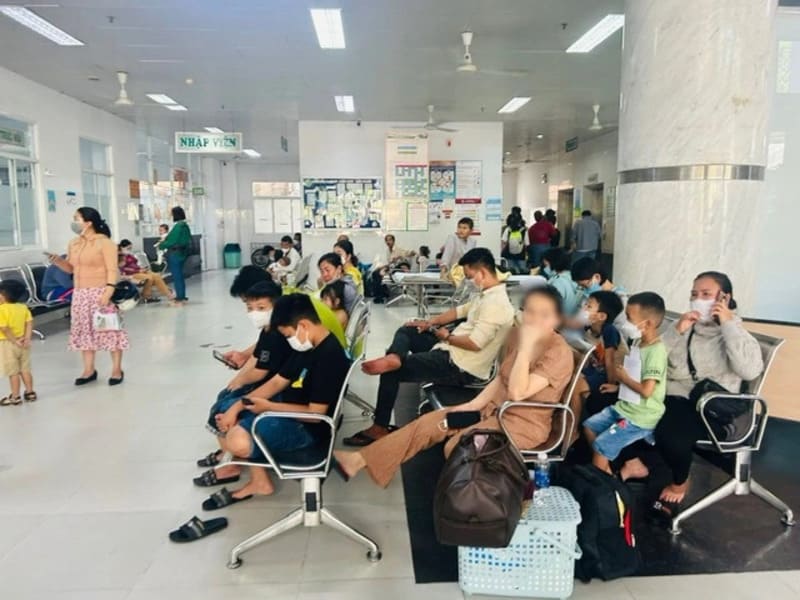
Private hospitals & international clinics provide:
- English-speaking pediatricians
- Modern diagnostics and safe vaccination programs
- Transparent processes and follow-ups
- Dedicated emergency care for children
Most expat families choose private pediatric care for comfort and quality aligned with international standards. Understanding these options helps parents confidently navigate HCMC’s healthcare system and keep their children healthy and safe.
HCMC’s Top International Hospitals for Kids
Ho Chi Minh City has a growing network of international-standard hospitals trusted by expat families. From routine checkups and vaccinations to emergency and inpatient care, these hospitals provide reliable, child-focused healthcare for families living long-term in HCMC.
|
Hospital |
Location | Key Strengths | Best For |
| FV Hospital | District 7 (Phu My Hung) | • French-managed, JCI-accredited • Pediatricians trained in France, the U.S., and Singapore • Bilingual staff • 24/7 pediatric emergency department • Dedicated child-friendly pediatric ward | Families in District 7 seeking comprehensive, trusted, and convenient pediatric care |
| Hoan My Thu Duc International General Hospital | Thu Duc City | • International-standard hospital with accredited protocols • Experienced pediatricians trained locally and abroad • English-speaking support staff • Modern, child-friendly pediatric facilities | Families in Thu Duc, District 9, and District 2 need accessible, high-quality pediatric care |
| City International Hospital (CIH) | Binh Tan District | • International pediatric specialists • Modern, child-friendly facilities • More affordable than premium hospitals • Clear bilingual communication | Families in the western districts of HCMC are seeking modern, reliable, and cost-effective pediatric care |
| Vinmec Central Park International Hospital | Binh Thanh District | • Modern neonatal and pediatric departments • Pediatric surgery & NICU • Strong infection control • Multilingual staff | Families in Thao Dien, District 1, and Binh Thanh are looking for premium pediatric services |
Summary: Choosing the right hospital ensures safe, high-quality pediatric care, helping expat parents manage long-term family life in Ho Chi Minh City with confidence and reassurance.
Best Pediatric Clinics for Expats in HCMC
Not every child’s healthcare need requires a hospital visit. Many expat parents rely on pediatric clinics for checkups, vaccinations, and follow-ups. With child-friendly facilities and English-speaking staff, these clinics offer convenient, reliable care for families living long-term in HCMC. Below is a comparison of the top options.
| Clinic | Districts | Key Strengths | Best For |
| Victoria Healthcare | 1, 2, 7 & Phu Nhuan | • Patient-first approach • Experienced pediatricians & English-speaking staff • Easy appointment scheduling • Comprehensive checkups & vaccination programs | Families seeking a trusted, long-term pediatric partner |
| Family Medical Practice | 1, 2 & 7 | • Fully English-speaking pediatricians • Gentle, child-centered consultations • Convenient locations in major expat neighborhoods (Thao Dien) • Efficient appointments & 24/7 emergency support | Parents want reliable, international-standard pediatric care |
| CarePlus International Clinics | 1, 7 & Tan Binh | • English-speaking doctors & staff • Modern, child-friendly facilities • Comprehensive services: routine checkups, vaccinations, developmental monitoring | Families seeking high-quality, accessible pediatric care with peace of mind |
| Centre Médical International (CMI) | 3 | • English-speaking pediatricians trained internationally • Modern, child-focused facilities • Full pediatric services: checkups, vaccinations, developmental assessments | Families needing a central location, trusted care, and long-term pediatric support |
Vaccination Guidelines for Expat Kids in Vietnam
Vaccinations are a cornerstone of kids’ healthcare in HCMC, giving parents peace of mind while living abroad. Common questions include:
- Are vaccines safe in Vietnam? Yes. International hospitals use high-quality, globally approved vaccines.
- Should I bring my child’s vaccination record? Absolutely—both printed and digital copies help pediatricians update schedules accurately.
- Do vaccination schedules differ from those in Western countries? Minor variations exist, but doctors can align them with your home country’s recommendations.

Typical vaccines offered at international hospitals and clinics:
- MMR (Measles, Mumps, Rubella)
- Hepatitis A & B
- DTaP (Diphtheria, Tetanus, Pertussis)
- Rotavirus
- Japanese Encephalitis
- Pneumococcal (PCV)
For long-term expats, keeping vaccines current ensures children stay protected from tropical and seasonal diseases, supporting a safe, healthy, and worry-free life in Vietnam.
Emergency Care: What Expat Parents Should Know
Medical emergencies for children are uncommon, but knowing where to turn is a key part of kids’ healthcare in Ho Chi Minh City. Being prepared ensures parents can respond confidently and keep children safe.
Top pediatric emergency options:
- FV Hospital — 24/7 emergency pediatric department
- Family Medical Practice — rapid ambulance and urgent care support
- Vinmec Central Park — advanced pediatric emergency services
Essential tips for expat parents:
- Save emergency numbers on your phone and share with caregivers
- Know the nearest pediatric facility to your home
- Keep insurance cards, passport copies, and medical records accessible
- Brief babysitters or family members on emergency procedures
Having a clear emergency plan transforms stressful situations into manageable responses, giving families confidence in their children’s safety while living long-term in HCMC.
Health Insurance for Kids in HCMC
A key part of kids’ healthcare in HCMC is having reliable health insurance. Many hospitals require upfront payment from foreign patients, with reimbursement processed later unless direct billing is available. Being insured gives parents peace of mind and ensures children can access timely care without financial stress.
Popular health insurance options for expat families:
- Cigna Global — trusted worldwide
- Allianz Worldwide — comprehensive pediatric coverage
- Pacific Cross Vietnam — local expat-focused plan
- Bao Viet Insurance Corporation — extensive nationwide hospital network

Essential coverage for children:
- Pediatric outpatient care and routine checkups
- Emergency services and hospital stays
- Vaccinations and preventive care
- Specialist consultations
- Management of chronic or pre-existing conditions
With comprehensive insurance, expat families can confidently navigate HCMC’s healthcare system, keeping children safe, healthy, and protected at all times.
Tips for Choosing the Right Pediatrician in HCMC
Selecting the right pediatrician is a cornerstone of kids’ healthcare in HCMC. A trusted doctor ensures your child feels safe, understood, and supported, while giving parents peace of mind in daily care and emergencies.
Key factors to consider:
- Communication style and ability to explain treatments clearly
- Experience working with expat families and international standards
- Child-friendly clinic environment that eases anxiety
- Convenient location near home or school
- Availability for regular follow-ups and urgent visits
Many expat families explore 2–3 clinics before choosing a long-term pediatric partner. Taking the time to find the right doctor helps maintain consistent, high-quality care and supports a healthy, confident childhood in HCMC.
Best Neighborhoods for Families Wanting Easy Access to Kids’ Healthcare
|
Neighborhood |
Key Pediatric Services | Why It Works for Families |
| Thao Dien (District 2) | Family Medical Practice, Vinmec Central Park | Convenient for expat families, multiple English-speaking clinics |
| District 7 (Phu My Hung) | FV Hospital, numerous family-focused clinics | Safe, modern, family-friendly environment |
| District 1 & Binh Thanh | Central access to top hospitals & clinics | Ideal for busy working parents needing quick access |
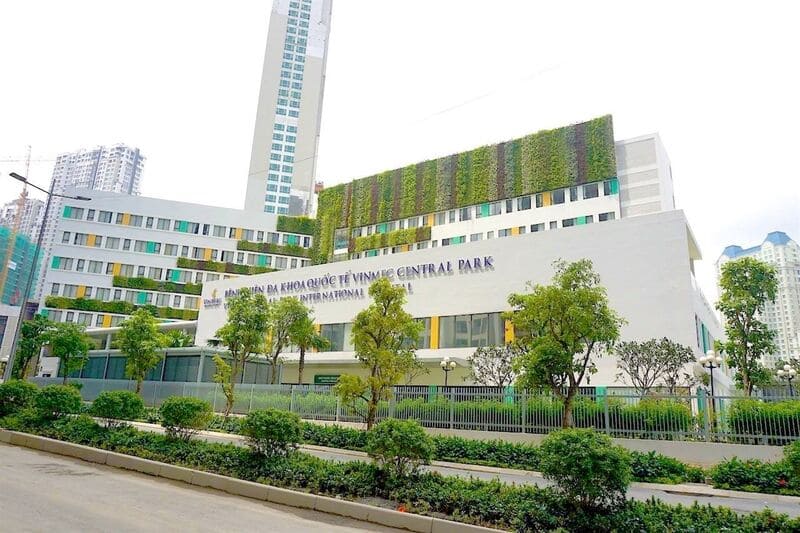
Living near trusted providers ensures consistent, reliable care, making kids’ healthcare easier to manage for long-term expat families.
Read more: Child-Friendly Apartments & Neighborhoods in HCMCFinal Thoughts: Building a Healthy Future for Your Kids in HCMC
Kids’ healthcare in HCMC is a cornerstone for expat families turning temporary stays into long-term, confident living. With trusted international hospitals, English-speaking pediatricians, and child-focused clinics, parents can ensure their children’s well-being while navigating a new city. The key is knowing where to go, developing a relationship with reliable doctors, and creating a flexible health strategy that grows with your child.
As you settle into HCMC — finding schools, homes, and routines — having confidence in healthcare makes daily life smoother. At JHouse, we support families in building a safe, happy, and stable life in HCMC, starting from the most important foundation of all: your child’s well-being.
If you’d like help finding a home near hospitals, clinics, or family-friendly neighborhoods, we’re here to guide you every step of the way.
JHouse Content Team
The in-depth content development team on housing services for foreigners & Vietnamese in Vietnam. The content is simple, easy to understand, and logically arranged to bring readers useful topics and information from real experiences.
Safety Tips for Families Living in Vietnam – Complete Expat Guide
Family Safety in Vietnam: Essential Tips for Secure Living with Kids
Long-term life abroad is exciting — but for many parents, that excitement comes with a constant worry: Is my family truly safe here? Safety tips for families living in Vietnam aren’t just practical reminders; they are the foundation that helps your home feel secure, predictable, and empowering.
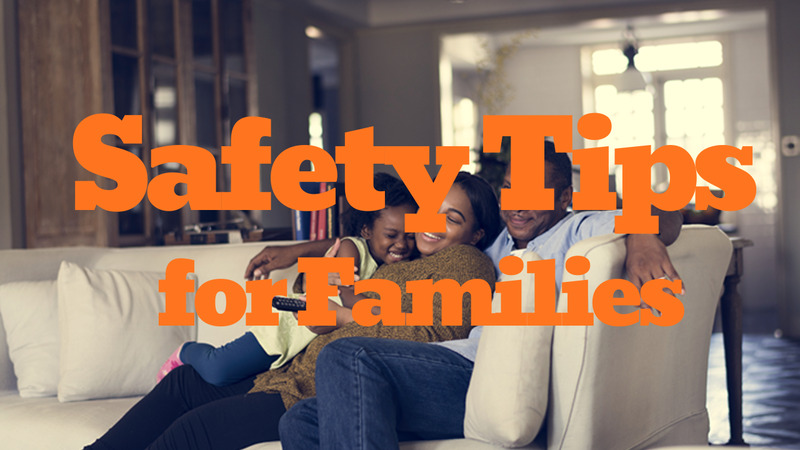
From everyday routines to unexpected challenges, Vietnam offers a warm, welcoming environment — but like any country, understanding how to navigate it confidently makes all the difference.
Whether you’re new to Vietnam or already building long-term roots, this guide gives you the clarity, reassurance, and practical steps you need to protect your loved ones — while still enjoying the vibrancy of daily life.
Understanding Family Life & Daily Risks in Vietnam
Vietnam is celebrated for its friendliness, strong community spirit, and family-centered culture. Children are cherished, neighbors look out for each other, and many neighborhoods feel vibrant and approachable. Yet for expat families, even simple tasks — crossing busy streets, navigating healthcare, or choosing safe neighborhoods — can feel daunting at first.
This guide combines family safety Vietnam tips, child safety advice, and expat safety guidance into a practical, easy-to-follow roadmap. Designed specifically for parents and guardians, it empowers you to understand local risks, make informed decisions, and create a secure, confident, and enjoyable daily life for your loved ones in Vietnam.
Read more: Raising a Family in Vietnam: Housing, Schools & LifestyleSafety Tips for Families — Your Essential Guide to Living Confidently in Vietnam
Creating a safe life for your family begins with choosing the right neighborhood. Vietnam’s cities offer family-friendly options, from quiet streets to international communities and modern developments. Following these safety tips helps you build a secure, nurturing home and enjoy a confident daily life with your children.
1. Choose Safe, Family-Friendly Neighborhoods
Where you live greatly influences how safe and comfortable your family feels. Top areas include:
- Thao Dien (District 2) has international schools and walkable streets
- Phu My Hung (District 7) offers clean, organized living with green parks
- District 9 / Thu Duc for quieter, spacious surroundings.
- Tay Ho (Hanoi) provides lakeside living within an international community
- Da Nang / An Thuong offers safe beachfront lifestyles at a slower pace.

These neighborhoods work well because they feature lower traffic, modern housing with strong security, easy access to supermarkets, clinics, schools, and ample open spaces for children. When choosing a home, consider 24/7 security, fire safety systems, controlled building access, kid-friendly amenities, and flood history. Selecting the right neighborhood is the foundation of a safe, confident, and happy family life in Vietnam.
Read more: Child-Friendly Apartments & Neighborhoods in HCMC
2. Traffic Safety: The Biggest Daily Challenge for Expat Families
Vietnam’s traffic is energetic, unpredictable, and can feel overwhelming for both parents and children. Yet with consistent habits, families can navigate it confidently and safely. Always:
- Use certified helmets — thin roadside versions are not enough
- Teach kids simple street-crossing rules: look left and right, walk slowly, and stay predictable.
- Choose safe routes for school runs, prioritizing sidewalks, zebra crossings, and areas monitored by traffic police.
- For longer trips, consider Grab Family or taxis with child seats rather than motorbike taxis.
- Avoid rush hours between 7:00–9:00 and 16:30–18:30 to reduce stress.
By following these child safety tips and traffic awareness practices, traffic — the biggest concern for newcomers — becomes manageable. Establishing daily routines and safe habits is key to creating a secure and confident family life in Vietnam.
3. Healthcare & Emergency Preparedness for Families
Healthcare safety is a top priority for expat families in Vietnam. Choosing reliable clinics and hospitals provides peace of mind while raising children in a new environment.
Family-friendly international facilities include Family Medical Practice (HCMC, Hanoi, Da Nang), FV Hospital (HCMC), Raffles Medical (Hanoi), and nationwide chains like Vinmec and Hoan My. These centers offer English-speaking doctors, modern equipment, reliable emergency departments, and vaccination programs for kids.
Insurance tips: select plans covering maternity, pediatrics, dental, and urgent care; consider expat-focused options like Pacific Cross or global plans such as Cigna and Allianz.
Emergency preparedness: save nearby hospital and clinic addresses, maintain medical files for each family member, identify pharmacies with English-speaking staff, and know the closest neighborhood clinic.

Combining proper healthcare access, insurance, and emergency planning helps families reduce stress and confidently enjoy safe, long-term living in Vietnam.
Read more: Kids’ Healthcare: Hospitals & Pediatric Clinics for Expats in HCMC4. Food, Water & Daily Lifestyle Safety
Vietnamese cuisine is rich and diverse, but families should prioritize safety to protect children and loved ones.
- Food safety tips include choosing busy eateries with high turnover, avoiding uncovered street food, washing fruits and vegetables with salt water, and buying meat from trusted supermarkets like Winmart, Aeon, or Lotte.
- Water safety means drinking filtered or bottled water, boiling water for baby formula, and installing a home purifier for long-term stays.
- Indoor safety habits include using mosquito nets or plug-in repellents, childproofing balconies, checking gas stoves for leaks, and using socket covers for younger kids. Following these
These safety tips ensure a comfortable, secure, and healthy home environment while living in Vietnam.
5. Digital & Online Safety for Kids
In Vietnam, high internet usage makes online safety a crucial part of family security. Parents can take practical steps to protect children while encouraging responsible digital habits. Key tips include:
- Enable parental controls on YouTube, Netflix, and TikTok
- Limit screen time, especially for younger kids
- Teach children not to share personal information online
- Secure home Wi-Fi with strong passwords and settings
- Monitor gaming platforms with chat features
Many international schools in Vietnam also teach digital citizenship, reinforcing safe online practices. By combining child safety tips at home with educational guidance, families can enjoy the benefits of the digital world while minimizing risks, creating a confident and secure environment for children in Vietnam.
6. Community Awareness: Build Your Safety Net
In Vietnam, the community plays a central role in daily life, and building a reliable local support network is essential for family safety in Vietnam. Neighbors often look out for each other, and expat groups quickly share trusted advice.

Families can strengthen their safety net by:
- Joining Facebook groups like Expats living & working in Vietnam, Foreigners in Saigon (Ho Chi Minh city), Hanoi Massive Community
- Attending weekend markets, school events, and local gatherings
- Connecting with other parents at playgrounds, cafés, or clubs
- Developing friendly relationships with building security staff
A strong community not only provides social support but also acts as an informal safety system during unexpected situations. By nurturing these connections, families can enjoy safe living in Vietnam with confidence, reduce stress, and create a secure environment for children.
Read more: Finding Your Tribe: Join Expat Communities in Ho Chi Minh City7. School Safety & Daily Routines for Kids
For expat families, ensuring school safety in Vietnam is a top priority. Many international schools uphold high safety standards, but parents should still ask key questions:
- Do they have emergency plans in place?
- Are entrances monitored by guards?
- How is pick-up and drop-off supervised?
- Do teachers speak English fluently?
- Are outdoor areas safe and properly supervised?
Encouraging predictable daily routines further enhances safety. Choose safe walking paths, establish clear drop-off and pick-up rules, and teach children to recognize trusted adults. By combining school safety checks with structured routines, families can reduce risks, support children’s independence, and enjoy confident, secure living in Vietnam.
Read more: Best International Schools In HCMC (By Age & Curriculum)8. Natural Hazards & Seasonal Awareness
Vietnam’s tropical climate means families must stay prepared for seasonal changes to ensure family safety. Understanding local weather patterns helps avoid unexpected risks.

Key precautions include:
- Monitor flood-prone areas during the rainy season
- Use insect repellent to prevent dengue and other mosquito-borne illnesses
- Carry an umbrella or a raincoat for children daily
- Keep emergency supplies at home, including flashlights, dry food, and power banks
- Avoid swimming at beaches without lifeguards
By anticipating natural hazards and following these child safety tips, families can enjoy life in Vietnam with confidence, reduce stress during unpredictable weather, and create a secure environment for children all year round.
9. Teach Kids Cultural Awareness & Street Smarts
A key part of family safety in Vietnam is helping kids understand the local culture. Teach them to respect elders, stay close in crowds, avoid touching pets without permission, and use basic Vietnamese phrases like “Cứu tôi” (Help me). These lessons reduce misunderstandings, strengthen everyday safety, and build confident, street-smart children in Vietnam.
Read more: Balancing Two Cultures: Raising Multilingual Children in Vietnam10. Practical Home Security Tips for Families
Ensuring a safe home is a cornerstone of family safety in Vietnam, especially for expats adjusting to a new environment. Simple precautions can make a significant difference:
- Install automatic door locks
- Use window and balcony guards
- Set up security cameras, which are common in Vietnam
- Maintain bright hallway lighting
- Keep a family safety checklist for emergencies

Most modern condos already provide 24/7 security guards, CCTV, and controlled access, making them ideal for families. By combining these practical measures with everyday vigilance, parents can create a secure, predictable, and comfortable environment for children, enhancing both peace of mind and confidence in daily living.
Final Thoughts: Safety Tips for Families Building a Life in Vietnam
Raising a family in Vietnam is a journey of growth, discovery, and unforgettable moments. Following practical child safety tips and embracing strategies for family safety in Vietnam — from traffic navigation and healthcare decisions to digital protection and community connections — transforms daily life into a confident, secure experience.
As you settle in, Vietnam gradually becomes more than a temporary stop; it turns into a home where your family truly belongs. When it’s time to find a residence that aligns with safety, lifestyle, and long-term goals, JHouse guides you with transparency, care, and deep local insight.
Let Vietnam be the place where your next chapter begins — filled with security, joy, and lasting memories.
JHouse Content Team
The in-depth content development team on housing services for foreigners & Vietnamese in Vietnam. The content is simple, easy to understand, and logically arranged to bring readers useful topics and information from real experiences.
Weekend Family Activities Around the City
Top Weekend Family Activities & Things To Do With Kids Around the City
Weekend family activities aren’t just about entertainment — they’re opportunities to slow down, reconnect, and build meaningful memories with your kids.

In vibrant cities across Vietnam, families have countless ways to turn simple weekends into something special. Whether you enjoy outdoor adventures, cultural discoveries, or relaxing indoor fun, weekend family activities can transform ordinary days into moments your children will remember.
Whether you’re new to the city or simply searching for fresh inspiration, this curated guide brings together the best things to do with kids around the city — enjoyable, flexible, and stress-free for every family. Let your weekends become the highlight of the week..
A Mindset Shift: From “Where to Go?” to “How to Enjoy?”
Every parent knows the weekend dilemma — wanting meaningful time together but feeling overwhelmed by choosing where to go with the kids. Crowds, weather changes, and constant last-minute decisions can turn weekend family activities into unnecessary stress.
But living in Vietnam means you don’t need complex plans; you just need clarity:
- What genuinely brings your family joy?
- Does your child thrive outdoors or prefer hands-on indoor activities?
- Do you seek quiet moments or lively adventures?
When you shift from “finding a place” to “choosing what fits your family’s rhythm,” weekend family activities become easier, more intentional, and deeply enjoyable.
Outdoor Adventures: Where Kids Burn Energy & Parents Recharge
Vietnam’s cities may be busy, but they’re full of green spaces that make outdoor play accessible, refreshing, and fun for the whole family.
1. City Parks & Playgrounds
These spaces form the heartbeat of weekend family activities. Easily accessible, free of charge, and thoughtfully designed for young children. Top spots include:
- Tao Dan Park (HCMC) – Shady paths, playgrounds, and open spaces for scooters
- Thu Thiem Central Park – Wide lawns ideal for picnics and games
- Thong Nhat Park (Hanoi) – A favorite for leisurely family walks
- East Sea Park (Da Nang) – A breezy mix of beach and playground

Kids can run, climb, and explore, while parents relax and enjoy low-pressure, flexible time. Even simple activities like kite flying, ball games, or scooter rides turn these parks into some of the city’s best weekend family activities.
2. Walking Trails & Nature Escapes
Nature is closer than you think. Consider:
- Saigon Zoo & Botanical Garden (District 1, HCMC) – Combines outdoor fun with learning
- Crescent Lake Walk (District 7, HCMC) – Serene waterfront strolls
- West Lake Loop (Hanoi) – Scenic walks for the whole family
- Son Tra Peninsula (Da Nang) – Adventure and exploration for active kids
Here, family bonding time happens naturally — walking, talking, laughing, and exploring together, making these outings a perfect complement to indoor fun.
Indoor Play Ideas for Stress-Free Weekend Family Activities
Vietnam’s tropical weather makes indoor options essential — and surprisingly abundant for weekend family activities.
1. Kids’ Play Centers
Indoor playgrounds are lifesavers on rainy or scorching days. Popular destinations include:
- TiniWorld – Perfect for toddlers to pre-teens
- KizCiti – Role-play fun like mini firefighting or banking
- Playtime Vietnam – Slides, ball pits, and creative corners
These spaces give children freedom to explore, learn, and express themselves, while parents enjoy air-conditioned peace of mind.
2. Museums for Kids
Interactive museums combine learning with entertainment, making them top choices for things to do with kids:
- Ao Dai Museum (HCMC) – Where culture meets creativity, suitable for kids aged 6–12
- Vietnam Museum of Ethnology (Hanoi) – Outdoor houses and engaging exhibits
- Da Nang Museum of Cham Sculpture – History told through art and interactive displays
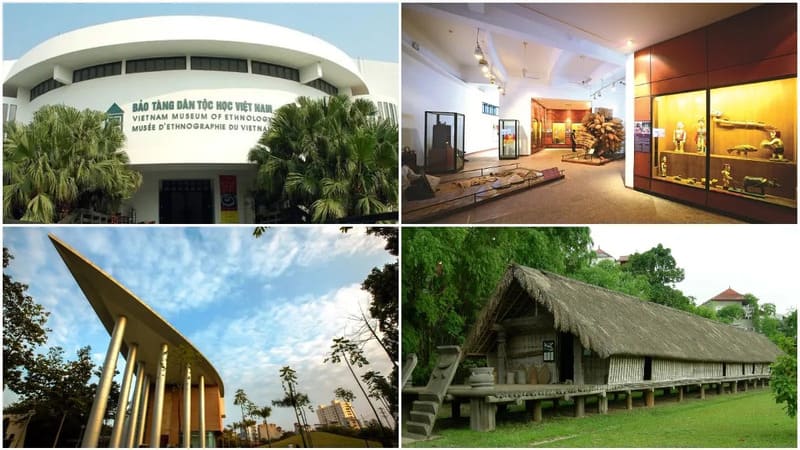
These venues provide hands-on ways for children to connect with Vietnam’s rich culture, making indoor weekends both educational and fun.
Water Play: Where Laughter Echoes Loudest
Water-based weekend family activities are a favorite in Vietnam’s warm climate, offering endless fun for kids and relaxation for parents.
1. Family-Friendly Pools
Many residential complexes and serviced apartments feature pools with shallow zones for children. For a change of scenery, consider:
- Landmark 81 community pools – Spacious, safe, and family-oriented
- Crescent Mall rooftop pool – Fun with a view
- High-end hotel day passes – Treat your family to a special swim day
2. Beaches Within Reach
Weekend beach trips are ideal for family bonding. In Da Nang, the beach is right at your doorstep. From HCMC or Hanoi, quick getaways to Vung Tau, Mui Ne, Ha Long, or Sam Son offer refreshing escapes.
With splashing, swimming, and sand play, these water-based activities transform ordinary weekends into some of the city’s best weekend family activities, filled with laughter and lasting memories.
Family Food Adventures: Tasty, Stress-Free, Kid-Approved
Food is central to both culture and weekend family activities, offering opportunities for discovery, connection, and fun. Vietnam’s dining scene is wonderfully diverse and family-friendly, making it easy to combine tasty meals with stress-free outings.
1. Cafés with Play Corners
These cafés let parents relax while children play safely:
- Kawaii Family & Kids Cafe (HCMC) – Cozy spaces with creative play areas
- Eco Kidplays and Coffee (Da Nang) – Interactive kid-friendly space for the whole family
- Lalina Kids Cafe & Restaurant (Hanoi) – Fresh, healthy menus and playful corners
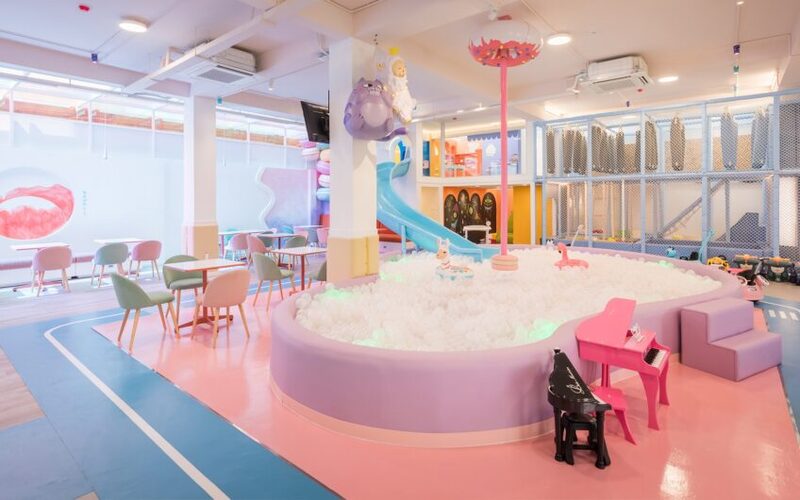
2. Street Food Walks
For older children, exploring markets or sampling local dishes turns mealtime into a sensory adventure. From bánh mì to fresh fruit stalls, street food walks become interactive family experiences that excite the taste buds and strengthen bonds.
By combining dining with fun, these culinary outings rank among the city’s most enjoyable weekend family activities, leaving both kids and parents happy and satisfied.
Learning Through Play: Boost Curiosity, Spark Discovery
Weekend family activities don’t have to feel like school, yet children naturally learn when they explore and play. Vietnam’s cities are full of opportunities to turn weekends into curiosity-driven adventures.
1. Workshops & Classes
From art workshops and pottery classes to weekend dance or music sessions and STEM labs or robotics clubs, these activities encourage creativity, confidence, and focus. They’re ideal for curious kids who love hands-on discovery.
2. Libraries & Bookstores
Family-friendly reading spots transform quiet weekends into enriching experiences. Favorites include Book Street (HCMC), Trang Tien Bookstore (Hanoi), and The Wiselands Coffee (HCM, Hanoi). Here, kids and parents can share stories, spark imagination, and enjoy screen-free bonding.
With playful learning, weekends become more than fun — they become some of the city’s most rewarding weekend family activities, blending joy, growth, and connection.
Quick Family Getaways: When the City Isn’t Enough
Some weekends call for a mini escape, and Vietnam offers plenty of options for weekend family activities beyond the city.
1. Nature Retreats
Explore fresh air, wildlife, and outdoor adventure at family-friendly destinations like:
- Cat Tien National Park – Trails, wildlife spotting, and bike rides
- Ba Vi National Park – Scenic hikes and nature exploration
- Mekong Delta day trips – River tours, local culture, and peaceful landscapes

These retreats offer active yet relaxing experiences, helping families create lasting memories together.
2. Resort Staycations
Sometimes the perfect weekend activity is simply unwinding in a beautiful setting. Resorts provide pools, room service, and serene grounds for leisurely walks and quality family time — all without the stress of travel planning.
From adventurous escapes to restful retreats, these getaways rank among the city’s most rewarding weekend family activities, blending relaxation, fun, and togetherness.
Read more: Traveling with Kids in Vietnam: What Expat Families Should ExpectSimple At-Home Weekend Ideas
Not every weekend needs to be an elaborate outing. Some of the most meaningful family bonding happens right at home, making for memorable weekend family activities without stress or planning.
Try these simple, engaging ideas:
- Build a pillow fort – Spark creativity and cozy playtime
- Cook a new dish together – Teach skills while tasting fun results
- Hold a family movie night – Popcorn, laughter, and shared stories
- Garden on the balcony – Nature, responsibility, and gentle fun
- Create a treasure hunt – Encourage problem-solving and excitement
Small, stress-free activities like these transform ordinary weekends into memorable moments, helping families recharge, connect, and enjoy quality time together.
How to Choose the Best Weekend Activity for Your Family
Every family is unique, and the best weekend family activities reflect your children’s personalities, energy levels, and interests. Choosing the right activity becomes effortless when you consider a few simple principles:
- Age Matters – Toddlers thrive in open spaces, while older kids enjoy challenges or educational experiences.
- Balance High-Energy and Calm Time – Pair an active playground visit with a relaxed café or reading session.
- Think in Themes – Outdoor → Food → Relaxation, Indoor → Learning → Creative play.
- Listen to Your Kids – Sometimes the most memorable outings begin with their ideas.
- Prepare Lightly – Pack water bottles, sunscreen, hats, and comfortable clothes to keep everyone happy.

The goal isn’t perfection; it’s connection. With these tips, planning fun, stress-free, and enriching weekend family activities becomes a natural, joyful part of family life.
Read more: Raising a Family in Vietnam: Housing, Schools & LifestyleWhy Weekend Family Activities Matter in the Long Run
Raising a family in Vietnam is vibrant and full of discovery, and weekends are more than a break — they help shape your family’s rhythm, values, and memories. Thoughtful weekend family activities create moments your children will cherish for years:
- Leisurely park walks
- Beach mornings with sandcastles
- Ice cream stops on sunny afternoons
- Library visits and storytime
- Museum trips are full of curiosity
- Rainy-day play centers
- Cozy cafés filled with laughter
These shared experiences nurture confidence, curiosity, and happiness in children while establishing a balanced, joyful rhythm for parents. Over time, these simple, intentional weekends become the foundation of a connected, thriving family life in Vietnam.
Read more: Raising Kids in HCMC: Guide for Long-Term Expat Families
Final Thoughts: Weekends That Bring Families Closer
Weekend family activities are more than plans — they’re the threads weaving your family life together. From exploring vibrant streets to relaxing in quiet cafés, visiting parks, or enjoying at-home fun, every weekend is a chance to reconnect, reset, and grow together.
In Vietnam, families enjoy endless choices: outdoor adventures, cultural spots, kid-friendly destinations, rainy-day escapes, and simple city outings. What matters most isn’t the destination, but showing up — fully present.
At JHouse, we help families find homes and neighborhoods that support these moments, making it easier to turn weekends into joyful memories. After all, weekends are the heartbeat of family life.
JHouse Content Team
The in-depth content development team on housing services for foreigners & Vietnamese in Vietnam. The content is simple, easy to understand, and logically arranged to bring readers useful topics and information from real experiences.







